Introduction
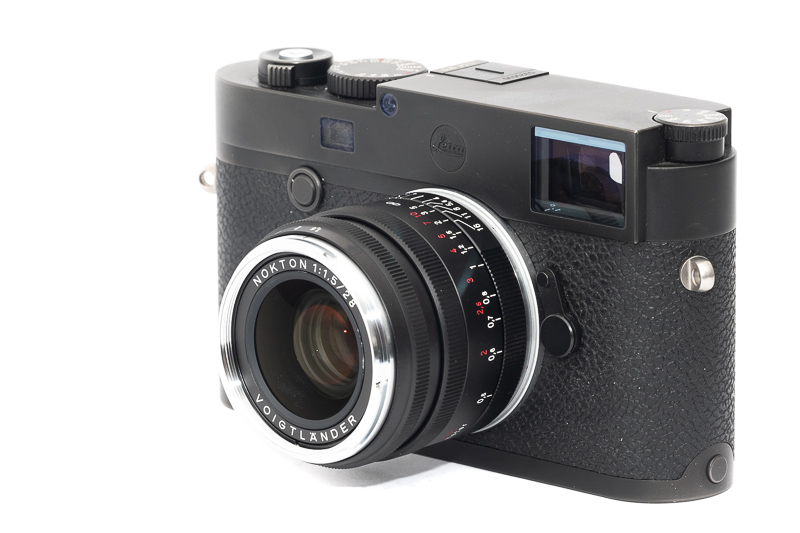
It has always been very hard to guess what Voigtländer lens Cosina will come up with next. By the time many people started giving up the hope for a fast 28mm M-mount lens we got exactly that: the Voigtländer VM 28mm 1.5 Nokton. Is this the fast 28mm lens I know many of you have been desperately waiting for? Let’s find out!
Sample Images
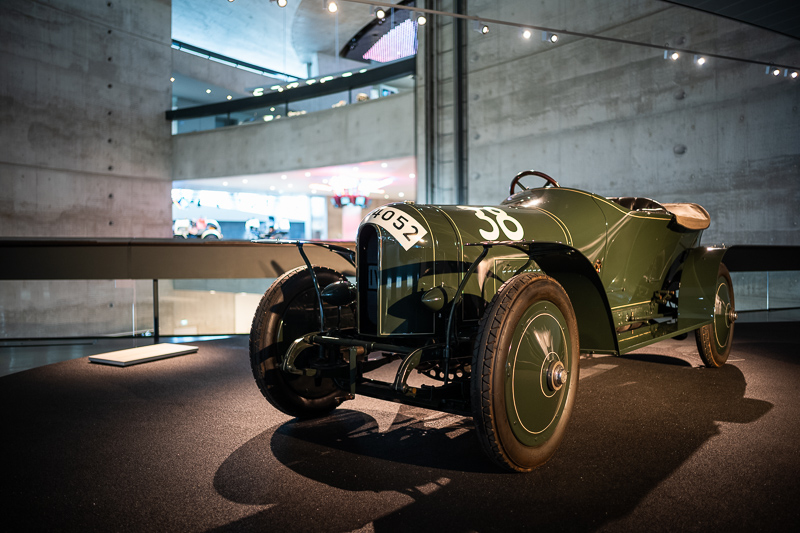
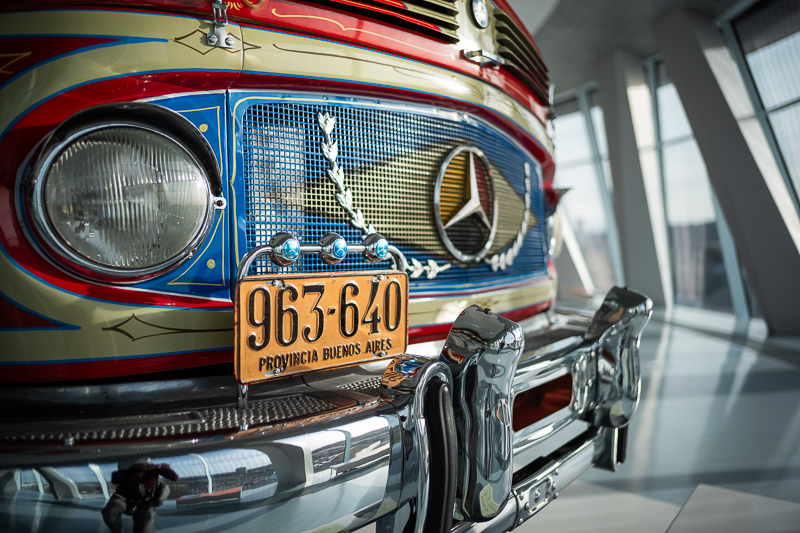
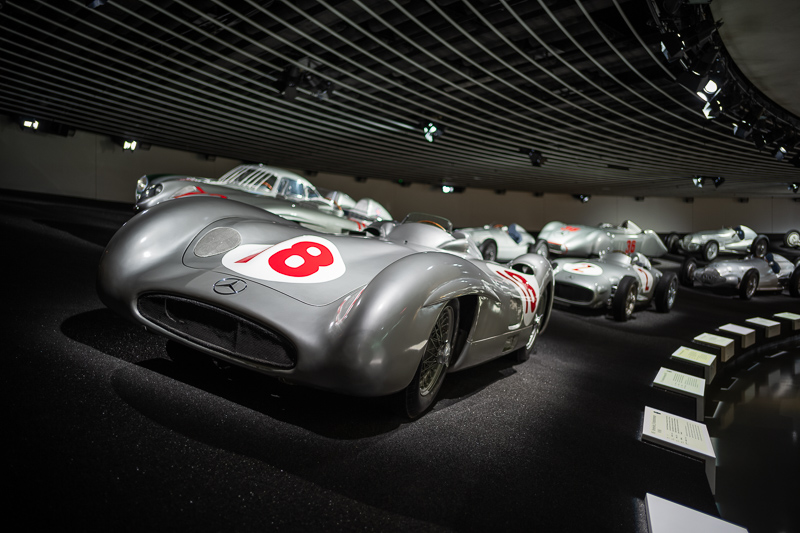

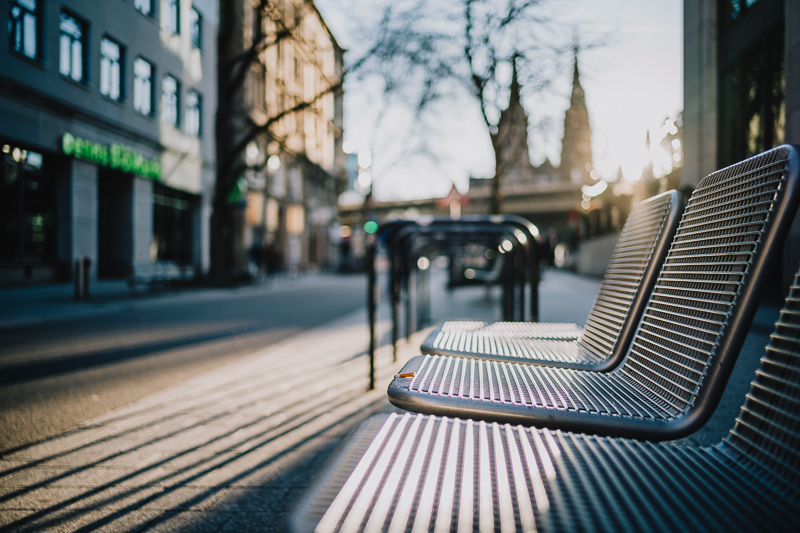

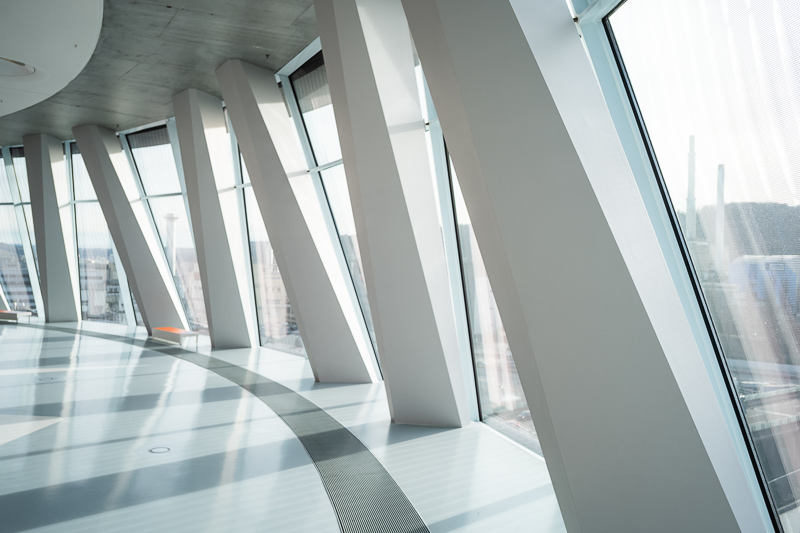
Most of the sample images in this review can be found in full resolution here.
Contents
Specifications/Versions
Cosina has a long history of producing 28mm lenses from f/3.5 to f/1.9. It took them until early 2024 to release a faster one, this Voigtländer VM 28mm 1.5 Nokton. It comes in two versions, a lightweight aluminium one (Type I) and a heavier brass one (Type II). The latter also comes with a small focusing stick that can be used instead of the focus tab. The optics of both versions are exactly the same.
- Voigtlander VM 28mm 1.5 Nokton Type I
249g (matte black/silver), aluminium - Voigtlander VM 28mm 1.5 Nokton Type II
330g (black/silver), brass, optional focusing stick
I received a Type I model in matte black for this review. It has the following specifications:
-
- Diameter: 54 mm
- Field of view: 74.5° (diagonally)
- Length: 46 mm
- Weight: 249g (Type I black)
- Filter Diameter: 43 mm
- Number of Aperture Blades: 12 (straight)
- Elements/Groups: 10/8
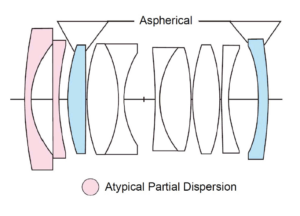
- Close Focusing Distance: 0.5 m
- Maximum Magnification: 1:14.4 (measured)
- Mount: Leica-M
buy from B&H | ebay.com | ebay.de (affiliate links) for $999/1049€ (Type I) to $1049/1149€ (Type II) or find your local Voigtländer distributor
Disclosure
The Voigtlander VM 28mm 1.5 Nokton was provided by Voigtländer GmbH, the German Voigtländer distributor, for reviewing purpose for a duration of 4 weeks.
Handling / Build Quality
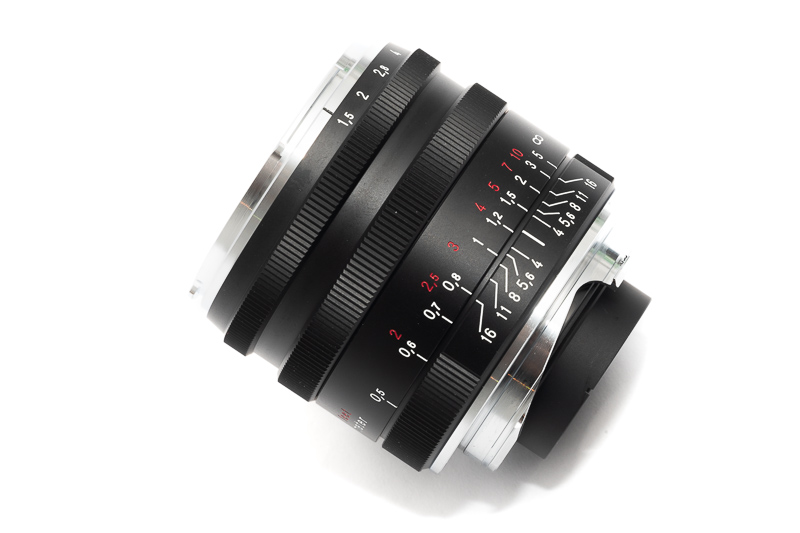
This Voigtländer VM 28mm 1.5 Nokton is part of Cosina’s “Vintage” line. It should be noted it got the “Vintage” designation because of its look, not because the pictures you take with it will look like they have been taken with an old lens, if you are looking for that then “Classic” is the term you need to look for in the Voigtlander portfolio.
The lens looks and feels really solid, all the markings are engraved and filled with paint, the focus ring has perfect resistance and turns about 100° from the minimum focus distance of 0.5 m to infinity. Unlike many Laowa lenses and also the Thypoch Simera lenses this one sadly does not feature a click-stop at the 0.7 m mark.
The aperture ring has equidistant and very distinct half-stop click stops and feels very tightly assembled. It turns ~110° from f/1.5 to f/16.
The lens does show noticeable rangefinder blockage, but still less than all the other similarly fast 28mm M-mount lenses.
This Voigtländer VM 28mm 1.5 Nokton does not come with a hood included, instead Voigtlander offers a rather pricy vented hood option here which is called LH-6. This is something that leaves me puzzled, because not only the more expensive Voigtländer VM 21mm 1.4 Nokton comes with a hood included, but also the cheaper Voigtländer VM 28mm 2.8 Color-Skopar does. I hope to one day understand how it is being decided which Voigtländer lens includes a hood and which doesn’t.
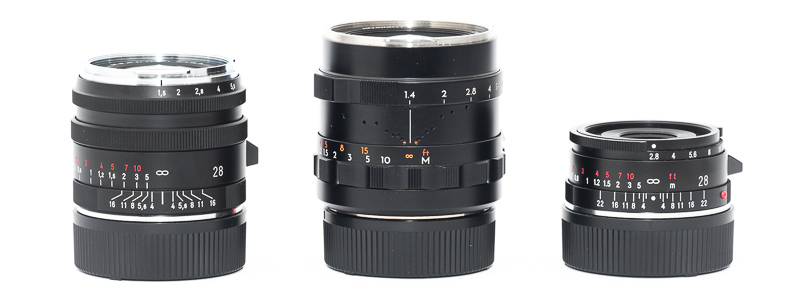
There are no more than four different 28mm 1.4 lenses for M-mount available – that is if we ignore the difference between f/1.4 and f/1.5, which we should. If we look at the aluminium version (Type I) of this Voigtländer, it is the smallest and lightest of them all. The Thypoch Simera 28mm 1.4 and the Leica 28mm 1.4 Summilux-M feature a floating elements design though, which usually leads to a more complex and therefore bigger/heavier lens.

The lens can be mounted to Sony E-mount cameras via Leica-M to Sony-E adapters. You can also equip it with autofocus by using the Techart LM-EA9 AF adapter. The autofocus works very well in the central part, but not that well outside of it, as is the case for most lenses.
Vignetting
light falloff

| f/1.5 | 3.4 EV |
| f/2.0 | 2.9 EV |
| f/2.8 | 2.1 EV |
| f/4.0 - f/16 | 1.8 EV |
All the Voigtländer 28mm M-mount lenses show really high vignetting figures and this one is by no means an exception. The interesting thing is, that all three of the current ones (this one, the 28mm 2.0 MK II and the 28mm 2.8) show a very similar amount of around 3.5 EV at their maximum aperture. Seems to me, this might be the design target Cosina set for their 28mm M-mount lenses. This faster f/1.5 lens therefore has an edge at shared wider apertures over the slower Voigtländers, but stopped down they are all pretty much the same.
The Thypoch Simera 28mm 1.4 shows very similar vignetting figures. The 7Artisans 28mm 1.4 is doing better at its maximum aperture, showing one stop less light falloff.
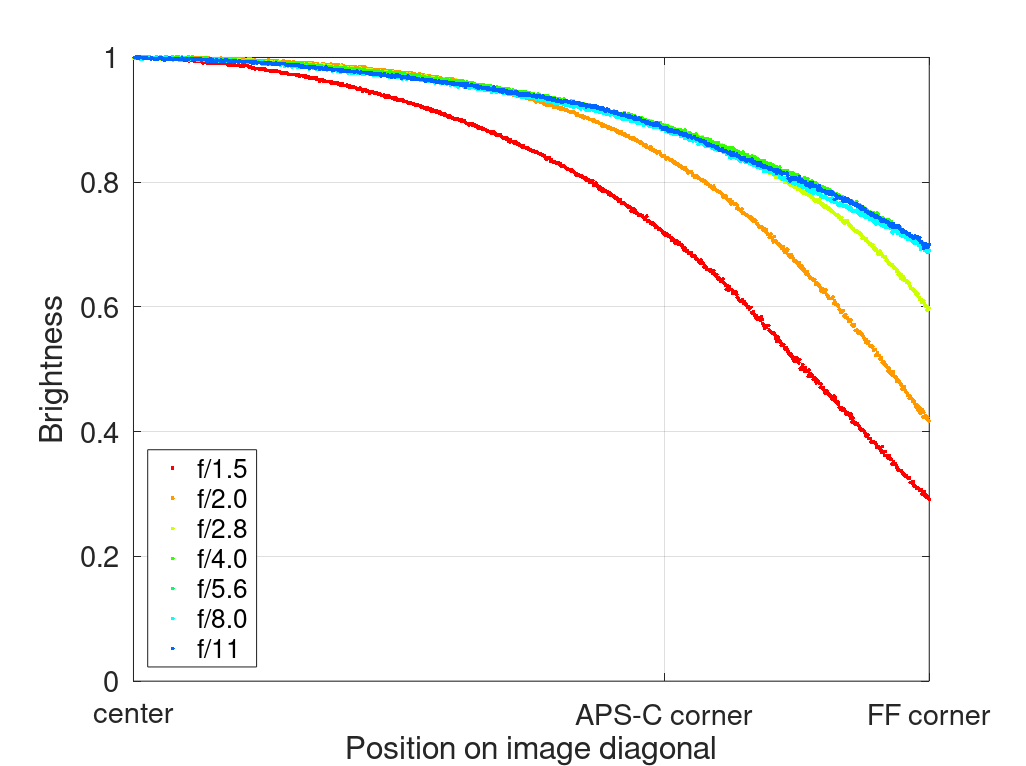
It is recommended to have a look at this article first to get an idea how this brightness graph works.
optical vignetting
Very fast yet compact lenses usually show a significant amount of optical vignetting. Without going too much into technical details optical vignetting leads to the truncation of light circles towards the borders of the frame.
In the center of the frame almost every lens will render a perfect circle, but only lenses with very low optical vignetting will keep this shape in the corners.
So in the following comparison we move from the center (left) to the extreme corner (right) and see how the shape of the light circle changes.
Due to their compact size many of the fast Voigtländer lenses show very high optical vignetting. The almost one stop slower Voigtländer VM 28mm 2.0 Ultron MK II is probably the 28mm lens with the strongest optical vignetting I came across so far, so I didn’t have exactly high hopes for this 28mm 1.5 lens.
Good news are, this new 28mm 1.5 does not show as massive vignetting as the 28mm 2.0. The 7Artisans 28mm 1.4 shows less optical vignetting and the Thypoch Simera 28mm 1.4 the least of all the fast 28mm M-mount lenses. On the other hand the Thypoch and the 7Artisans also show noticeable onion structures, which is not the case for this Voigtländer 28mm 1.5.
Sharpness
Focus shift
With some lenses when stopping down the plane of optimal focus shifts to the back or the front. Here that is not the case, as I did not see any relevant focus shift – good news for rangefinder users.
We do see noticeable longitudinal CA here though – stronger than what we saw from the Voigtländer VM 50mm 1.5 Nokton MK II, because this 28mm is simply much sharper near its minimum focus distance.
infinity (24mp Leica M10, 42mp Sony A7rII)
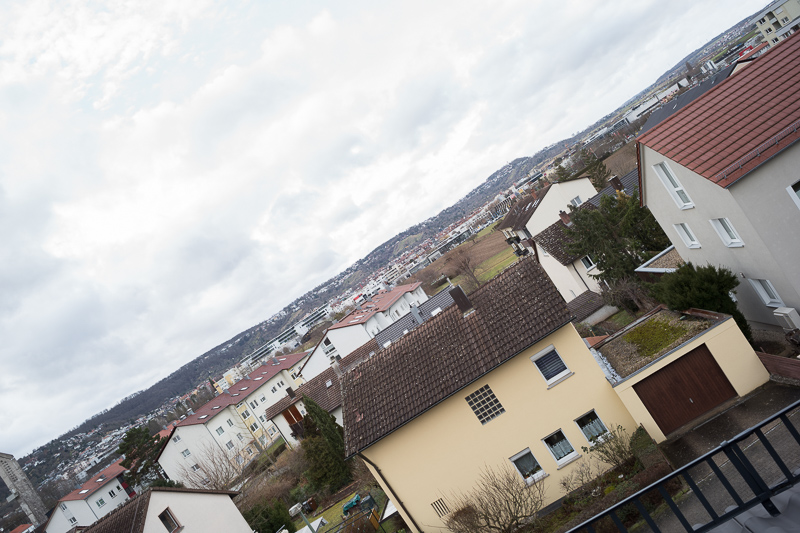
Considering the Voigtlander VM 28mm 1.5 is such a small and compact lens it shows a surprisingly good performance. On the Leica M10 we see slight color aberrations at f/1.5, but the corners already look decent. The midframe looks great from f/2.8, the corners look best at f/5.6. The performance is similar to the Voigtländer VM 28mm 2.0 Ultron MK II at shared apertures, which is quite the achievement.
On the Sony A7rII with its thicker filter stack the performance in the midframe as well as in the corners is worse – as is to be expected. The midframe needs f/5.6 to look good here and even stopped down to f/11 the corners do not look as good as on the Leica camera at f/4.0. If you are using a Sony FE or Nikon Z camera and the performance in this category is important to you, better have a look at the Laowa 28mm 1.2 Argus, 7Artisans 28mm 1.4 FE+ or the Viltrox FE 28mm 1.8 AF, which all look great across frame from f/4.0.
portrait distance 0.9 m (24mp Leica M10 and Sony A7III)
For portraiture it isn’t so important how flat the field is, it is more interesting to see what the sharpness is like when focused at different parts of the frame to take field curvature out of the equation.

We will be looking at 100% crops from the 24mp Sony A7III and the Leica M10. Both cameras do not have an anti aliasing filter in front of the sensor.
Leica M10 <—> Sony A7III
For a 28mm 1.5 lens a good performance at this distance is very important to me, as this is where I usually find myself when taking environmental portraits and this is what lenses like this are ultimately made for.
In the center this 28mm shows an amazing performance, in the inner midframe a very good one, but in the outer midframe it starts to struggle a bit. Again the performance is very similar to the Voigtländer VM 28mm 2.0 Ultron MK II. The Thypoch Simera 28mm 1.4 is not as contrasty in the center and the inner midframe, but looks noticeably better in the outer midframe.
On a Sony camera with its thicker filter stack the performance is very similar in the center and inner midframe and slightly worse in the outer midframe.
close 0.50 m, 1:14.4 (42mp A7rII)
This Voigtländer VM 28mm 1.5 Nokton shows a surprisingly good performance at its minimum focus distance, especially when we compare its performance to the Thypoch Simera 28mm 1.4 with its floating elements design. Despite featuring a simpler unit focus design this Voigtländer corrects spherical aberration (glow) better, which leads to higher contrast and resolution. It does show stronger color aberrations though.
Flare resistance
As always evaluating flare is a complex matter since you can get any lens to look bad if you push it hard enough and a slight change of scenario can affect results a lot.
That being said, most of the recent Voigtländer lenses have been showing a great performance in this category, e.g. the VM 50mm 1.2 Nokton, the VM 35mm 1.7 Ultron and also the slower VM 28mm 2.0 Ultron MK II as well as the VM 28mm 2.8 Color-Skopar. That being said, the VM 50mm 1.5 Nokton MK II was a bit of a disappointment I hope won’t repeat itself.
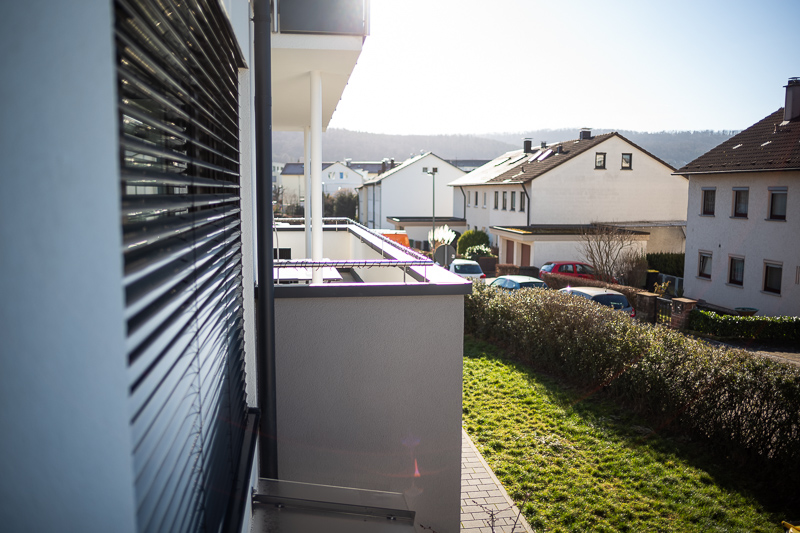
A bit of a negative surprise was that faint ring flare you can see in the picture above. It is still visible at f/2.0 and disappears at f/2.8. I wonder if that shiny front ring is the cause of this.
As said, a slight change of camera position can make a big difference, so here we have a look at the same scene with different camera positions, first at f/1.5:
Leica M10 | Voigtlander VM 28mm 1.5 Nokton | f/1.5
Here we see some small ghosts and parts of that faint ring flare again.
Leica M10 | Voigtlander VM 28mm 1.5 Nokton | f/11
Stopped down to f/11 the performance is typical for a modern Voigtländer lens, meaning very good. There is one very specific position that leads to a big veiling flare, but with the slightest reframing this is easily avoided. Apart from that there are only tiny ghosts visible that should usually not be a problem.
In very rare occasions I encountered some veiling flare, like in the following picture. This could be avoided by either stopping down or slightly reframing.
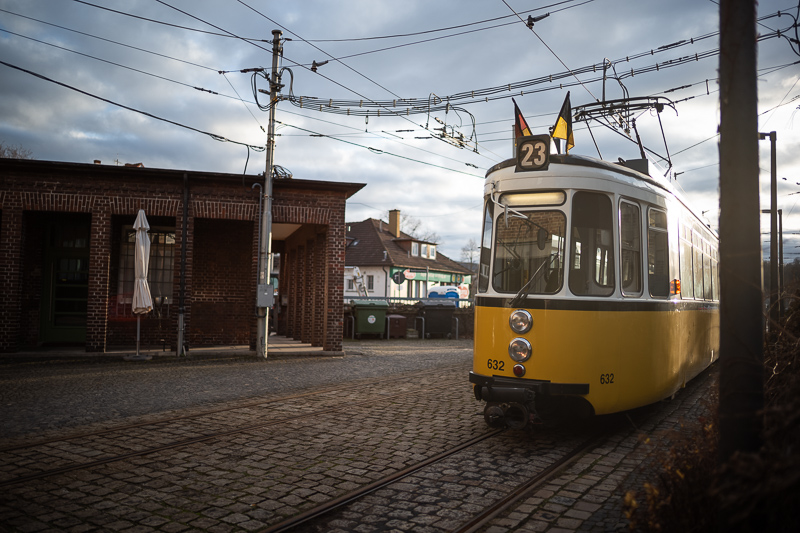
This is not the absolute best performance I came across in this category, but fact is the M-mount competitors, meaning the 7Artisans 28mm 1.4 and the Thypoch Simera 28mm 1.4, do not stand a chance in this category. And neither do the non M-mount lenses like the Sigma 28mm 1.4 Art, Nikon AF-D 28mm 1.4 and Laowa 28mm 1.2 Argus.
Coma
100% crops from extreme corner, focused on center, Leica M10
Also in this category the performance is similar to other fast and compact Voigtländer lenses, which means noticeable Coma between f/1.5 and f/2.0 and much less stopped down to f/2.8. To completely get rid of it you have to stop the lens down to f/4.0.
In this category the 7Artisans 28mm 1.4 is a better performer, as its corners are already clean at f/2.0. The Voigtländer VM 28mm 2.0 Ultron MK II also shows less Coma at f/2.0.
Distortion
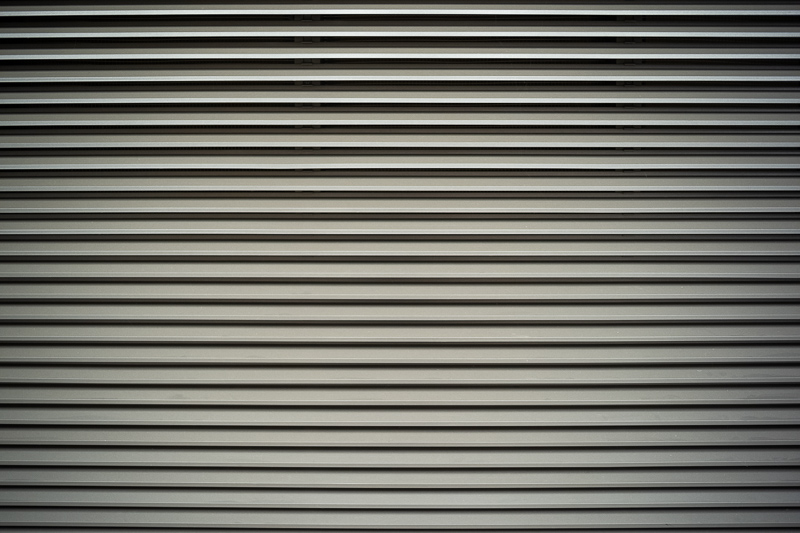
The Voigtlander VM 28mm 1.5 Nokton shows a small amount of barrel distortion. There is no lens profile available yet and for most applications it also won’t be needed.
Bokeh
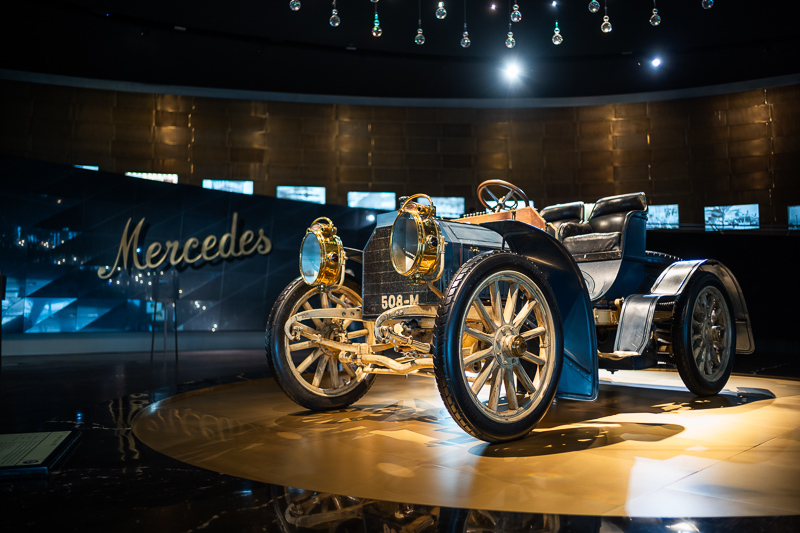
This is the category where I was most interested in this lens’ performance. While the Voigtländer VM 28mm 2.0 Ultron Mk II (and also the VM 28mm 2.8 Color-Skopar) perform very well in most categories, I didn’t enjoy their bokeh rendering that much – except for very close distances – because of very high optical vignetting.

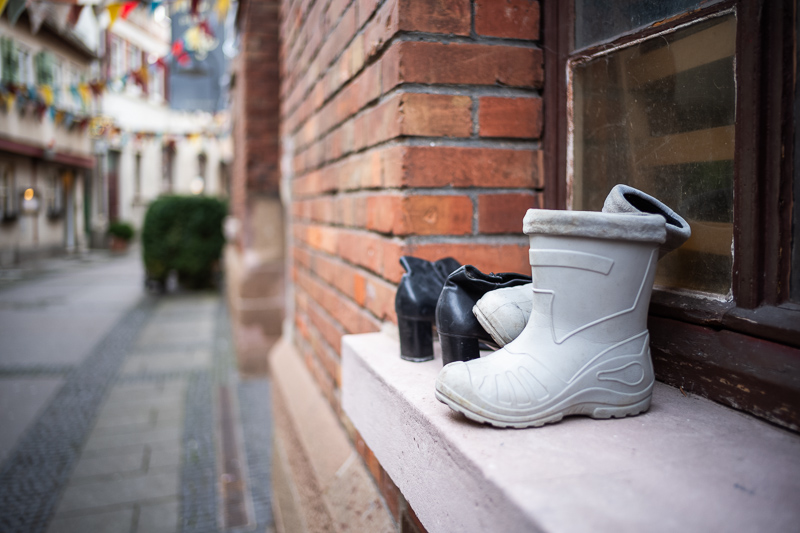

At close distances the lens draws a mostly smooth and undistracting bokeh that won’t take attention away from the subject – at least I think this is how it should be. The minimum focus distance of 0.5 m also allows for a very shallow depth of field here.
This is a fast, compact wide angle lens, so of course the bokeh is not as nice in the corners as in the center of the frame, but that is true for almost any lens anyway.
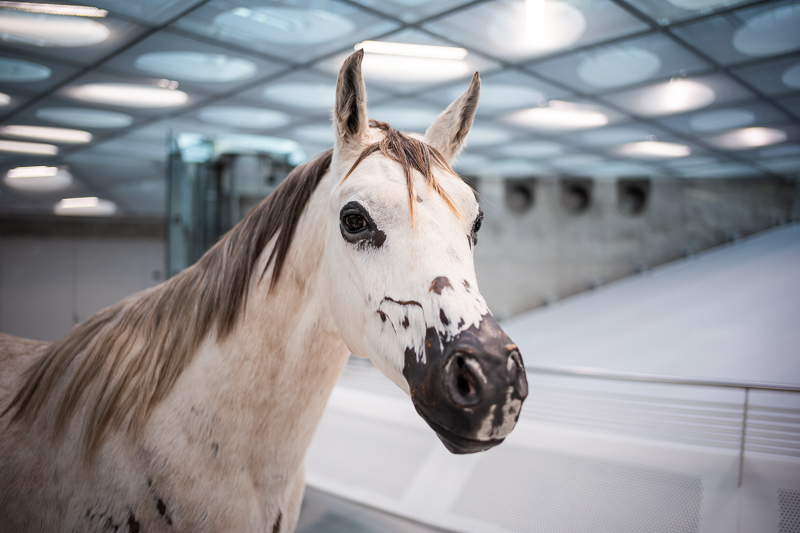
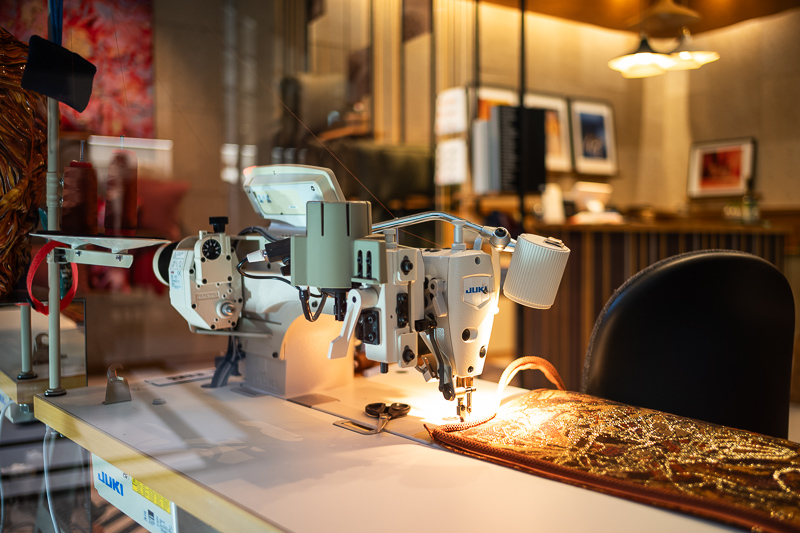
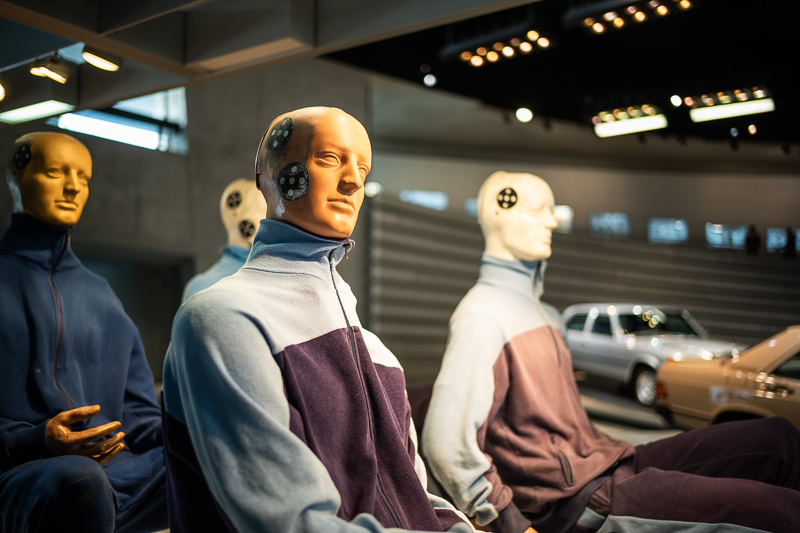
At mid distances you already need to watch out for some perspective distortion, but also here the lens is doing a good job.
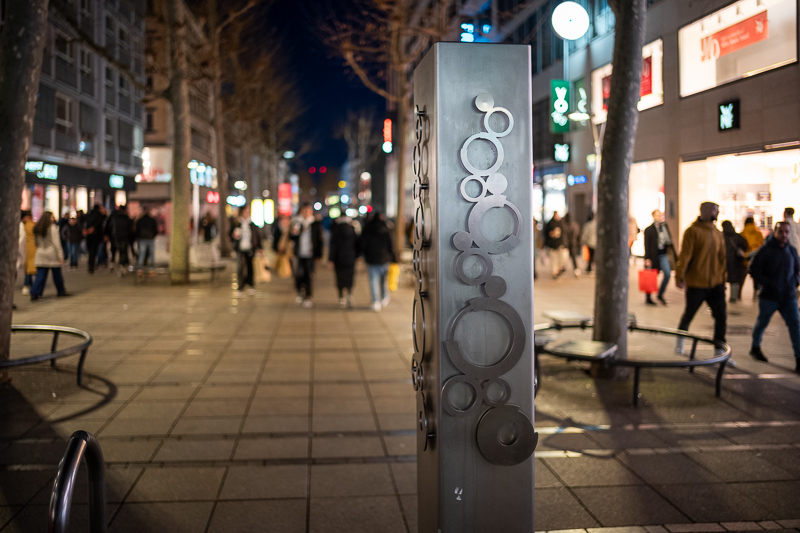



Now these are the distances where I wasn’t super happy with the previous f/1.9 and f/2.0 Voigtländers. Good news are: optical vignetting is not as bad here, but especially at longer distances field curvature can still be an issue, leading to things in the corners being in focus even though they shouldn’t, as you can see from the following examples:
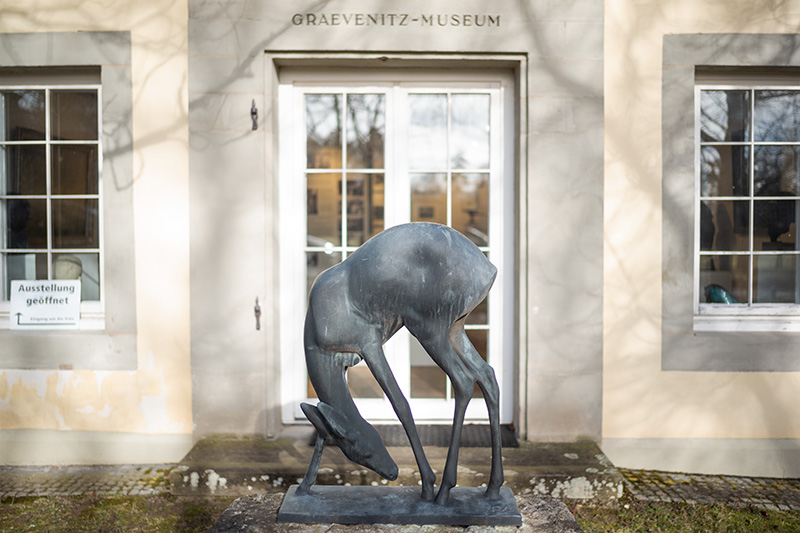
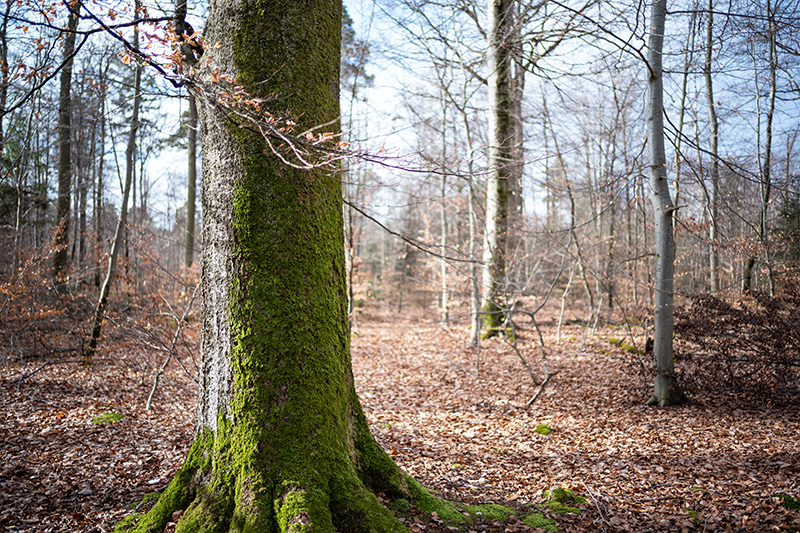

This effect is more pronounced when using the lens on a stock Sony or Nikon camera with their thicker filter stack.
If this is something that is important to you, it might be worth to have a closer look at the Thypoch Simera 28mm 1.4.
Because it was winter I took many of the samples in the Mercedes Museum and I did the same with the Sigma 28mm 1.4 Art. So I have many nearly exact side by side shots (Sigma on Sony A7III, Voigtländer on Leica M10). And this reminded me of the time I compared the Sigma 35mm 1.2 Art DG DN on Sony to the Voigtländer VM 35mm 1.2 Nokton III. Yes, these huge Sigma lenses offer better off center sharpness at wider apertures and also the bokeh towards the corners is smoother, but at what cost in terms of size and weight?
So considering how small this Voigtländer is, I do not think there is much to complain here. But as always, have a look at the sample pictures and decide for yourself.
Sunstars
Like many of the recent Voigtländer lenses also this 28mm 1.5 features 12 straight aperture blades, which yield very distinct suntars from f/2.0 to f/11.
If you want to know more about sunstar rendering of different lenses have a look at this article.
Chromatic aberration
lateral
100% crops from corner, M10
There are only very minor lateral CA visible that are easily corrected in a raw developer like Lightroom by one click.
longitudinal
The performance in this category is very similar to the other fast Voigtländer lenses, which means noticeable bokeh fringing at f/1.5 that improves steadily on stopping down. Stopping down to f/2.8 is not sufficient to completely get rid of this aberration, as can be seen from the comparison above.
When it comes to purple fringing the situation is similar, but here stopping down to f/2.8 is sufficient to make the colorful outlining go away.
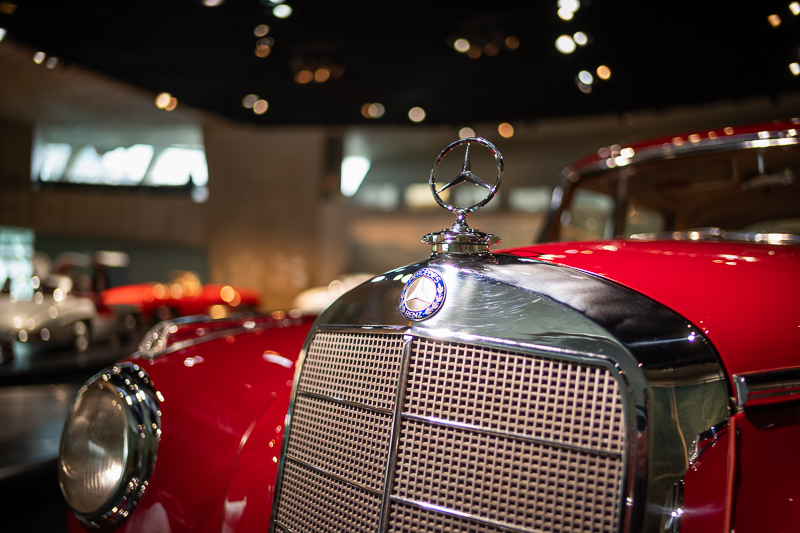
If you design a lens as fast as f/1.5 and as compact as this one you cannot correct every aberration perfectly. It seems Cosina decided to make some compromises when it comes to the CA correction with this series, as the VM 50mm 1.5 Nokton MK II and the VM 35mm 1.5 Nokton perform similar.
While not free of this aberration either, the 7Artisans 28mm 1.4 and the Thypoch Simera 28mm 1.4 do perform better in this category.
Conclusion
good
|
average
|
not good
|
I know a lot of people have been waiting for a fast, compact 28mm M-mount lens from Cosina. If you are among those, I doubt you will be disappointed, as this lens is pretty much exactly what I was expecting, maybe even a bit better than that.
The list of things to complain about is short. The small size leads to strong vignetting, as was to be expected. A small ring flare can also appear in the f/1.5 to f/2.0 range. Off center sharpness at portrait distances as well as CA correction are also not as great as they could be with a more complex floating elements design, but that would have meant dimensions comparable to the Thypoch Simera 28mm 1.4 or even the VM 21mm 1.4 Nokton. And I doubt many of you would prefer that.
The list of positive aspects is long and typical for these fast Voigtländer lenses. Very good sharpness at infinity, good flare resistance, nice bokeh at short to mid distances, nice sunstars stopped down, low distortion and all that in the most compact and lightweight package in this class. As said, we got, what we hoped for.
Every new Voigtländer M-mount lens makes it harder to choose which one to get though. When looking at the 28mm lenses we have a very nice line-up: this 28mm 1.5 – the fastest yet still surprisingly compact – the slightly smaller 28mm 2.0 Ultron MK II and the tiny 28mm 2.8 Color-Skopar. If you cannot find here, what you are looking for, I don’t know what you are looking for.
buy from B&H | ebay.com | ebay.de (affiliate links) for $999/1049€ (Type I) to $1049/1149€ (Type II) or find your local Voigtländer distributor
Alternatives
You can find all my reviews of 28mm M-mount lens reviews here, so I will only talk about the most obvious alternatives in more detail.
Thypoch Simera 28mm 1.4:
Now as a whole package this Voigtländer VM 28mm 1.5 Nokton is the better lens for most. The Thypoch has some handling issues that get in the way, you will not encounter any such issues here.
However, in two important categories I see the Thypoch lens ahead: off center sharpness at portrait distances (most likely thanks to its floating elements design) and bokeh – thanks to less optical vignetting and more importantly better corrected field curvature. So if you are mainly interested in environmental portraits, the Thypoch might be the better choice for you.
buy from ebay.com | B&H (affiliate links) for $699
Leica 28mm 1.4 Summilux-M:
Fred Miranda did a thorough comparison between this Voigtländer VM 28mm 1.5 Nokton and the Leica 28mm 1.4. Have a look at it and if afterwards you still think it is a good idea to pay $6700 more for the bigger, heavier and even less close focusing Leica lens there is no help for you anymore. Please use the affiliate link below to make your purchase, so at least I am getting something out of it.
buy from B&H (affiliate link) for $7800
7Artisans 28mm 1.4:
This 7Artisans is noticeably bigger and heavier – maybe too big to comfortably use on Leica M-cameras. Apart from that the main disadvantages are its long 0.7 m focus distance and fuzzy sunstars. The main advantages are nice bokeh also at longer distances, its low price and that the FE+ version also works well on Sony E and Nikon Z cameras, so it ican be a good choice for people that use more than one camera system.
buy from ebay.com | ebay.de for about $495 (affiliate links)
Voigtlander VM 28mm 2.0 Ultron MK II:
This 28mm 2.0 MK II is almost one stop slower and slightly more compact and cheaper. In terms of optical performance these lenses perform very similar. If you want to make use of the wider aperture I would rather recommend to get the f/1.5 version due to nicer bokeh rendering thanks to less optical vignetting. If you are more about sharpness at portrait distances at f/2.0 this Ultron is actually the better choice.
buy from B&H | ebay.com | ebay.de (affiliate links) for $799
Voigtlander VM 28mm 2.8 Color-Skopar:
If you don’t really care about having a fast maximum aperture and you are looking for the smallest and lightest 28mm lens instead, this is the one for you.
buy from ebay.com | B&H (affiliate link) for $699
Sample Images
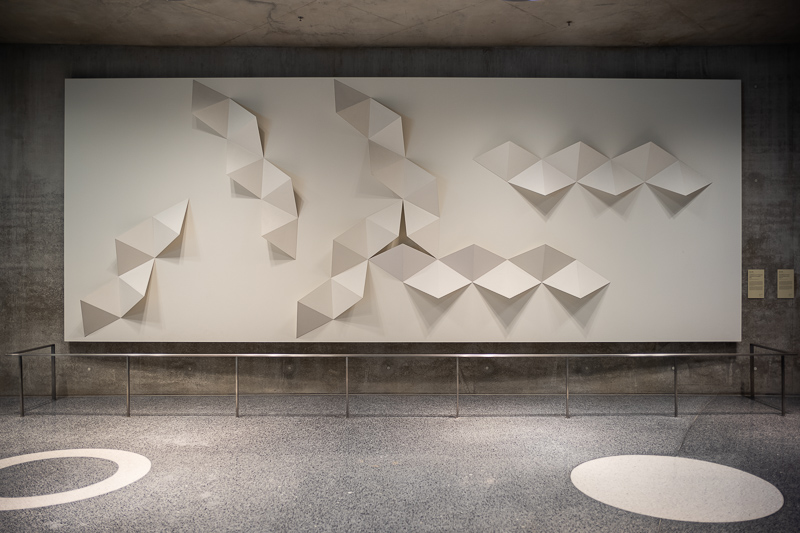

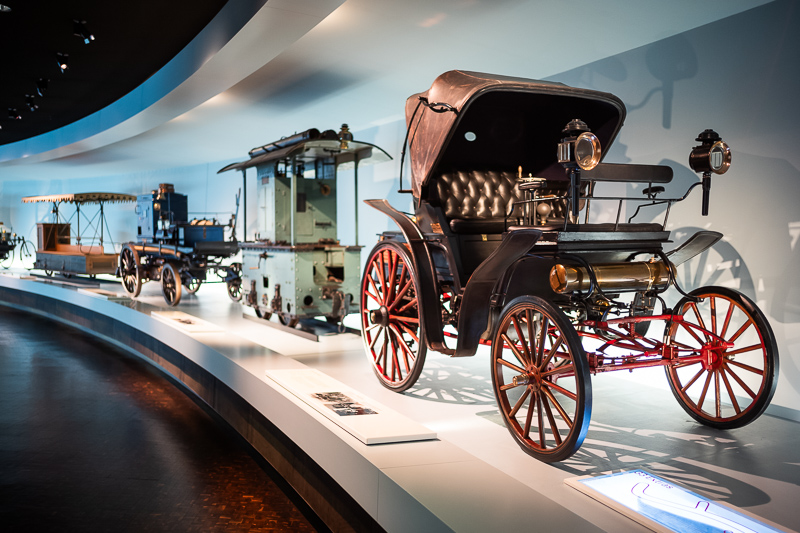
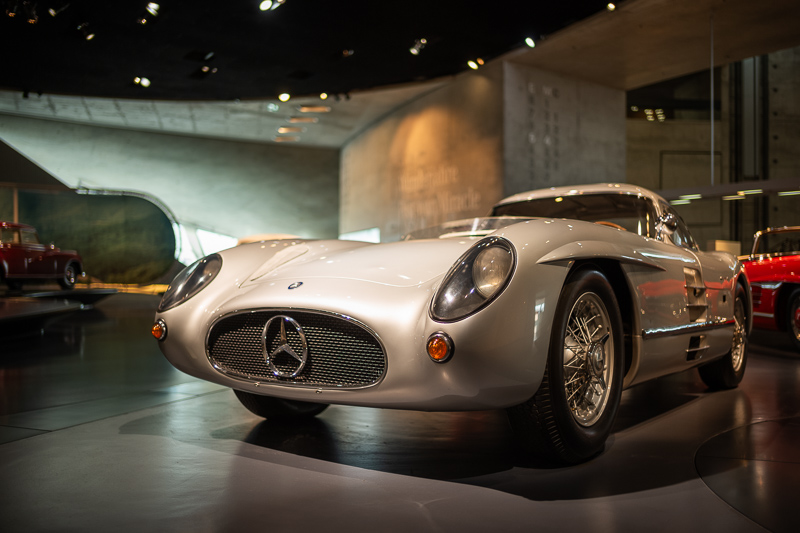
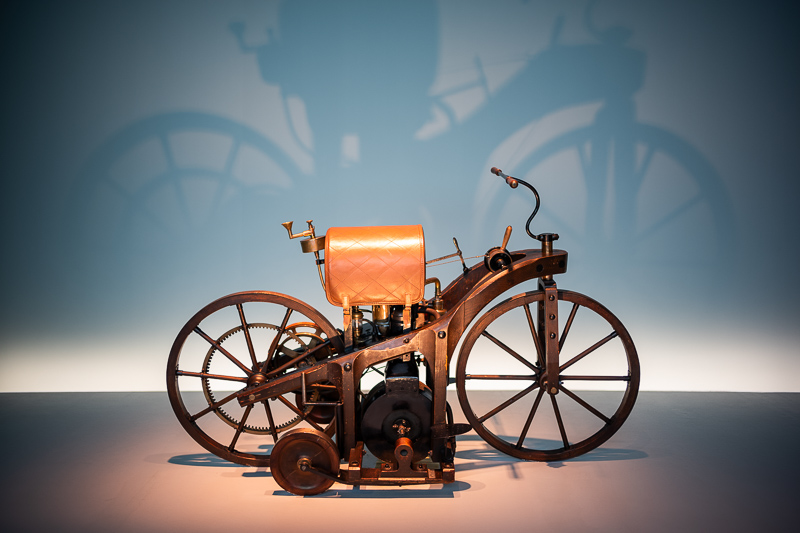
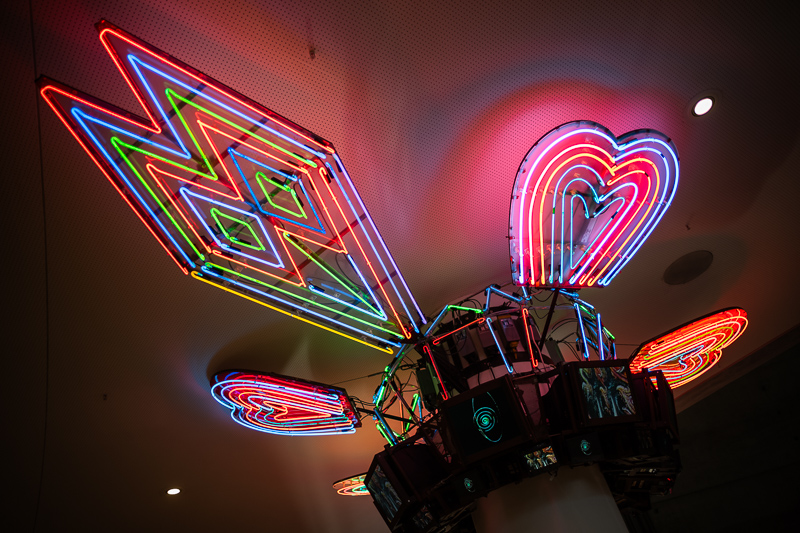
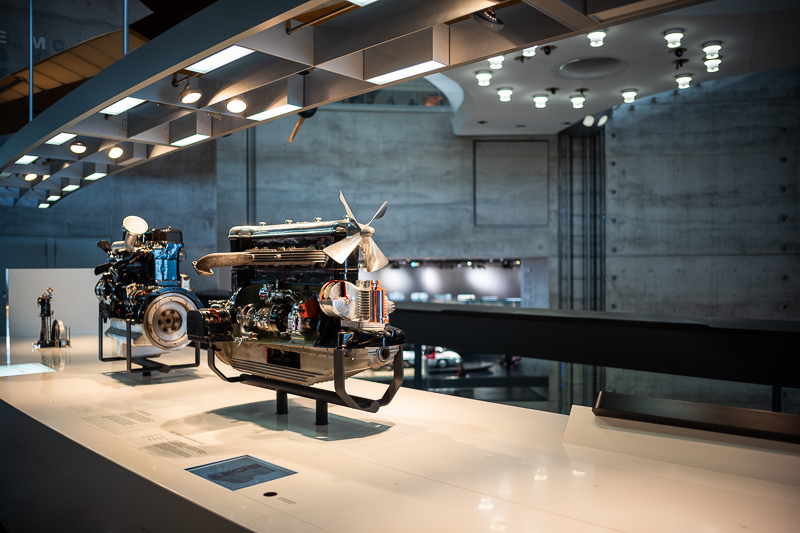
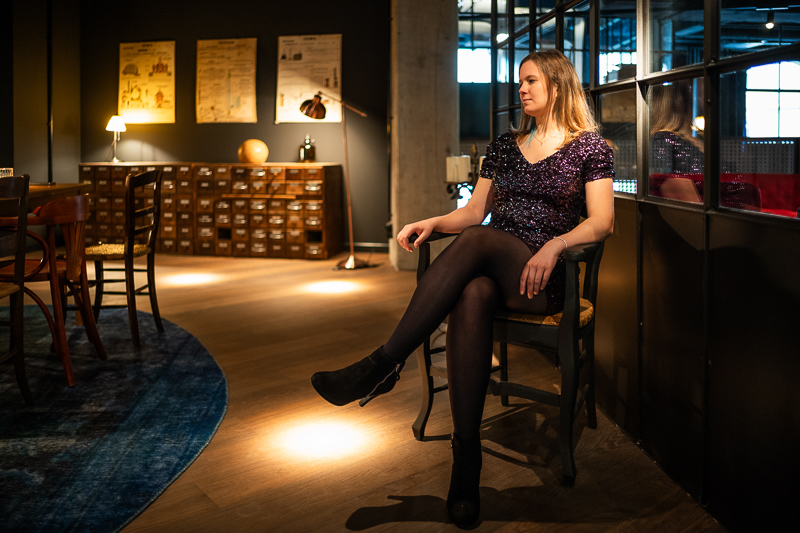
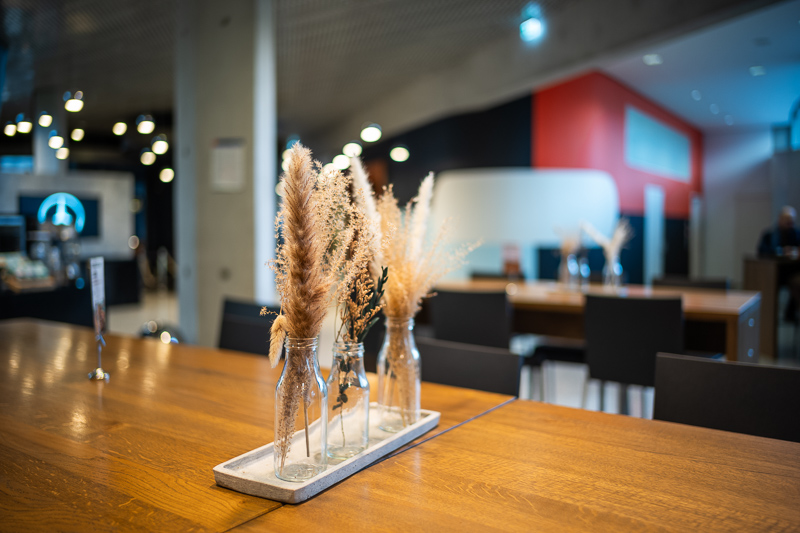


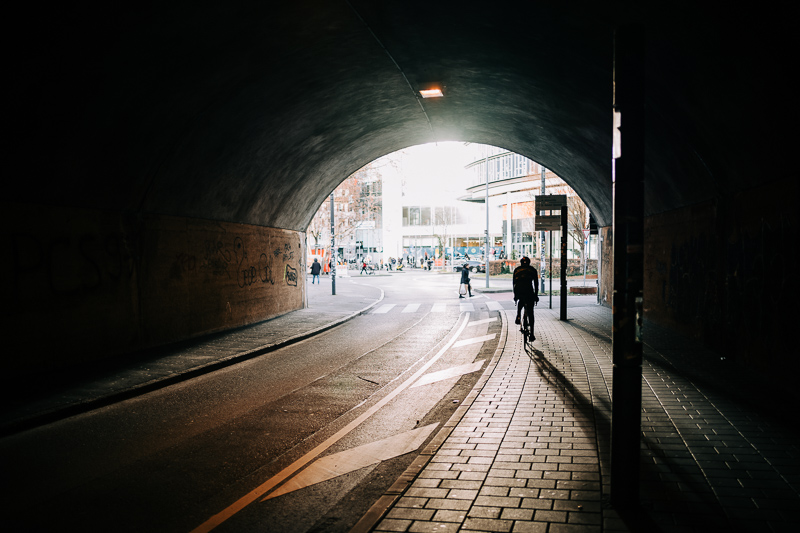
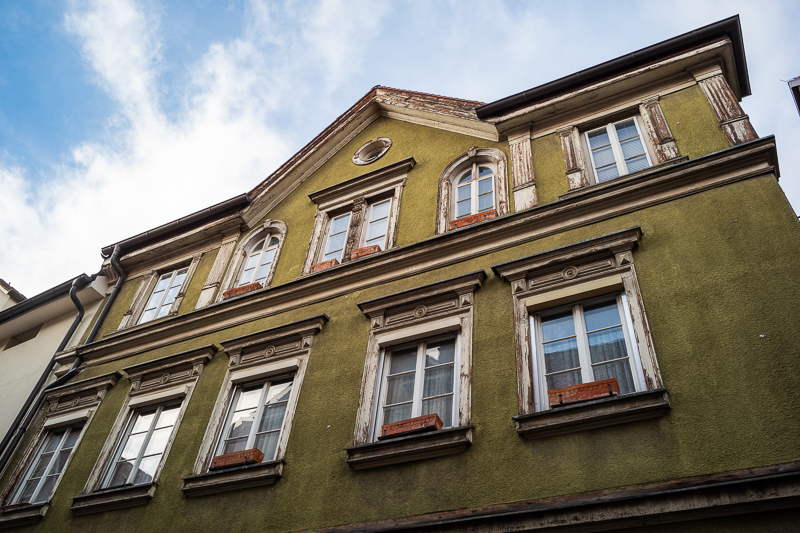
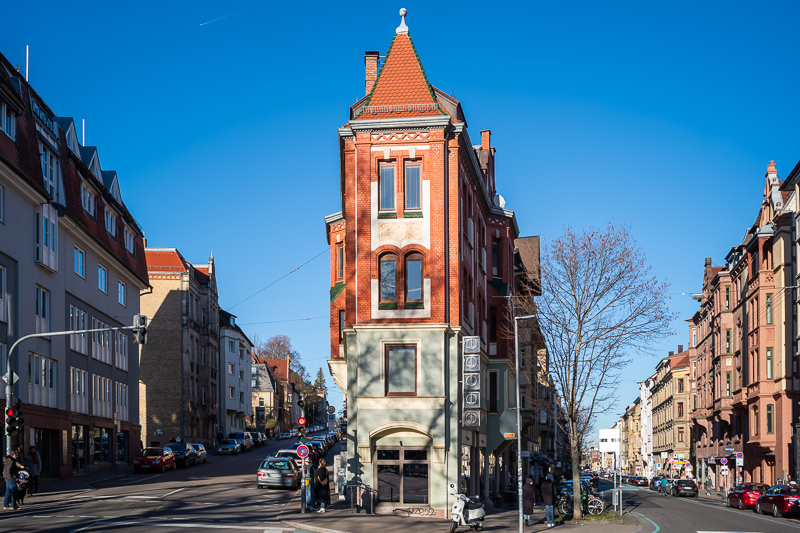
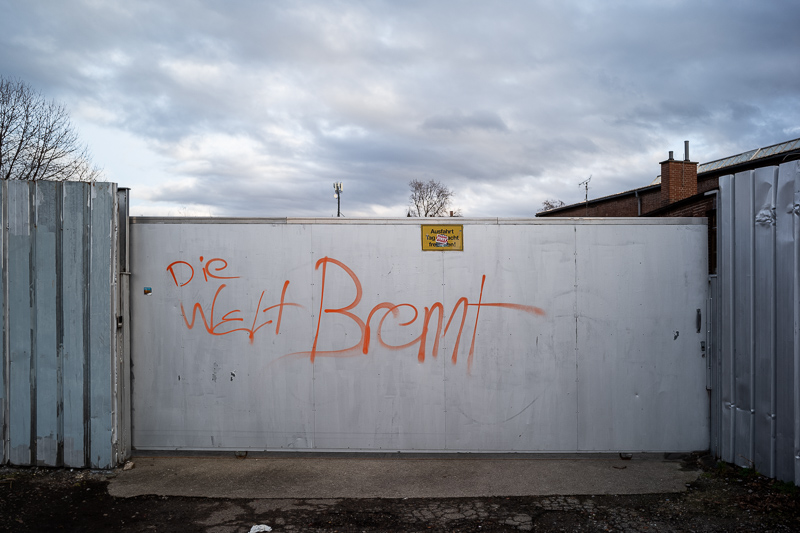
Most of the sample images in this review can be found in full resolution here.
Further Reading
- All M-mount Reviews
- All Voigtländer Reviews
- Technical Knowledge
- Review: Laowa 15mm 2.0 M
- Review: Zhong Yi 135mm 1.4
Support Us
Did you find this article useful or just liked reading it? Treat us to a coffee!
![]()
![]()
![]() via Paypal
via Paypal
This site contains affiliate links. If you make a purchase using any of the links marked as affiliate links, I may receive a small commission at no additional cost to you. This helps support the creation of future content.
Latest posts by BastianK (see all)
- Review: Nikon AF-S 200mm 2.0G IF-ED VRI - March 28, 2025
- Recent Updates and Upcoming Content - March 24, 2025
- Review: Light Lens Lab 28mm 2.8 9-element - March 22, 2025
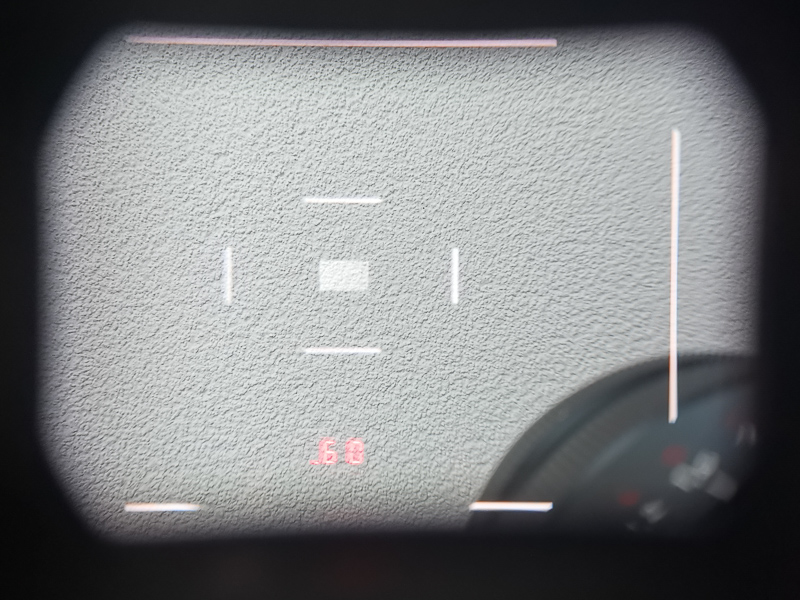
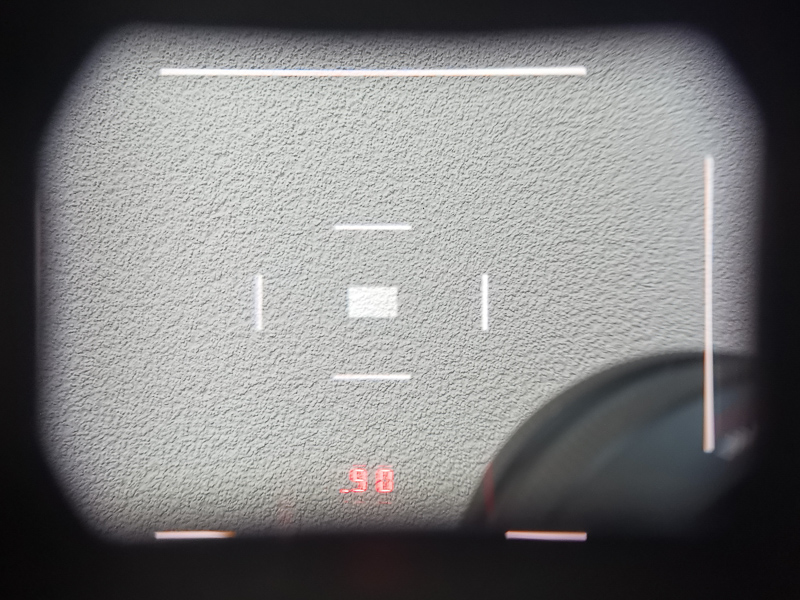






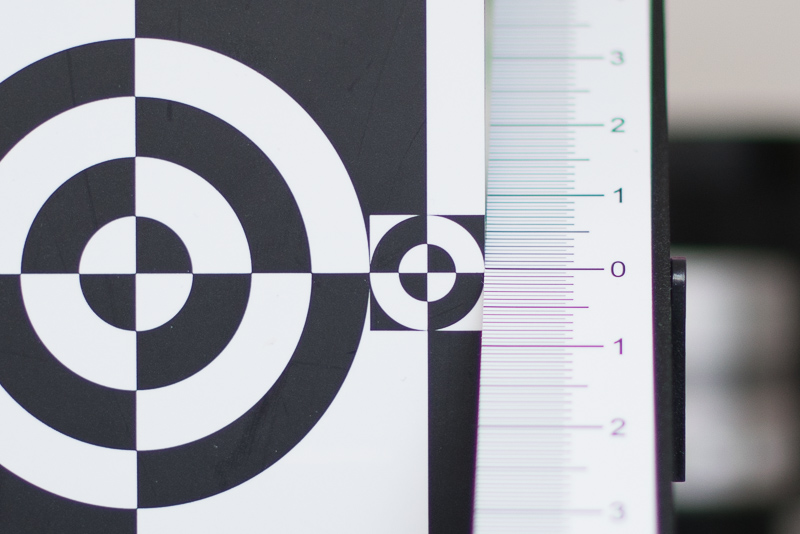
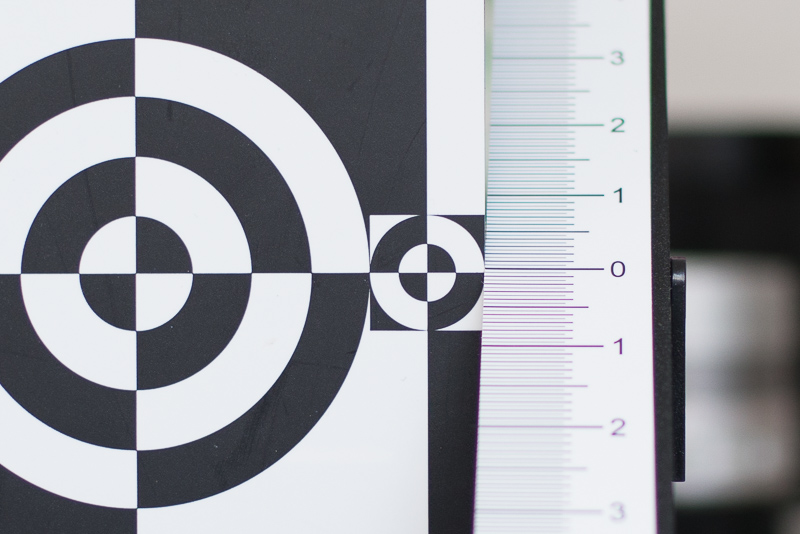
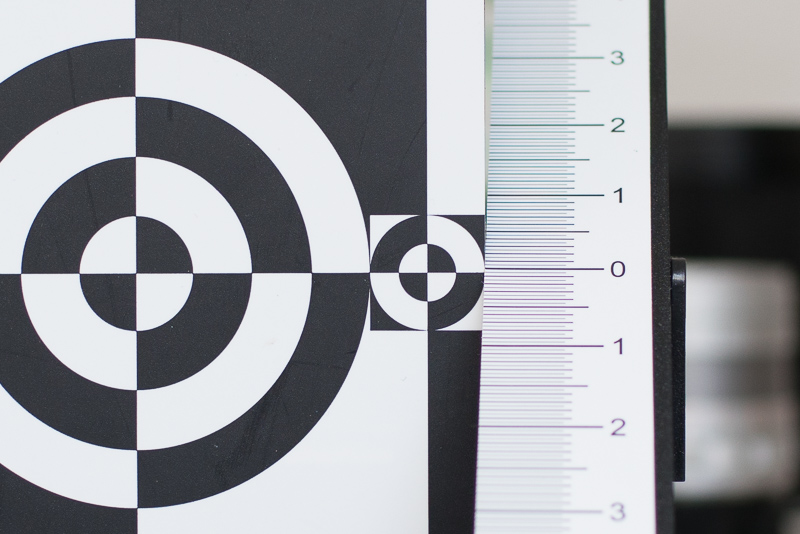
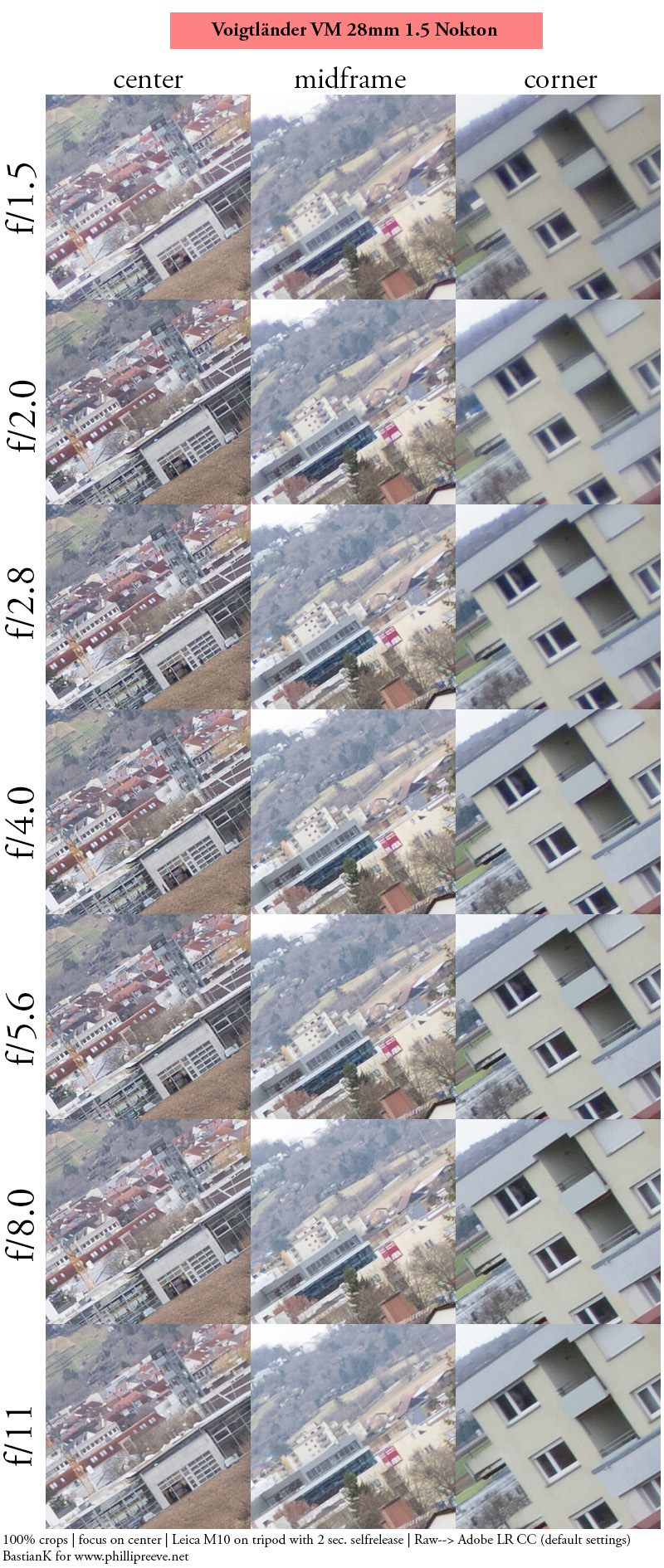
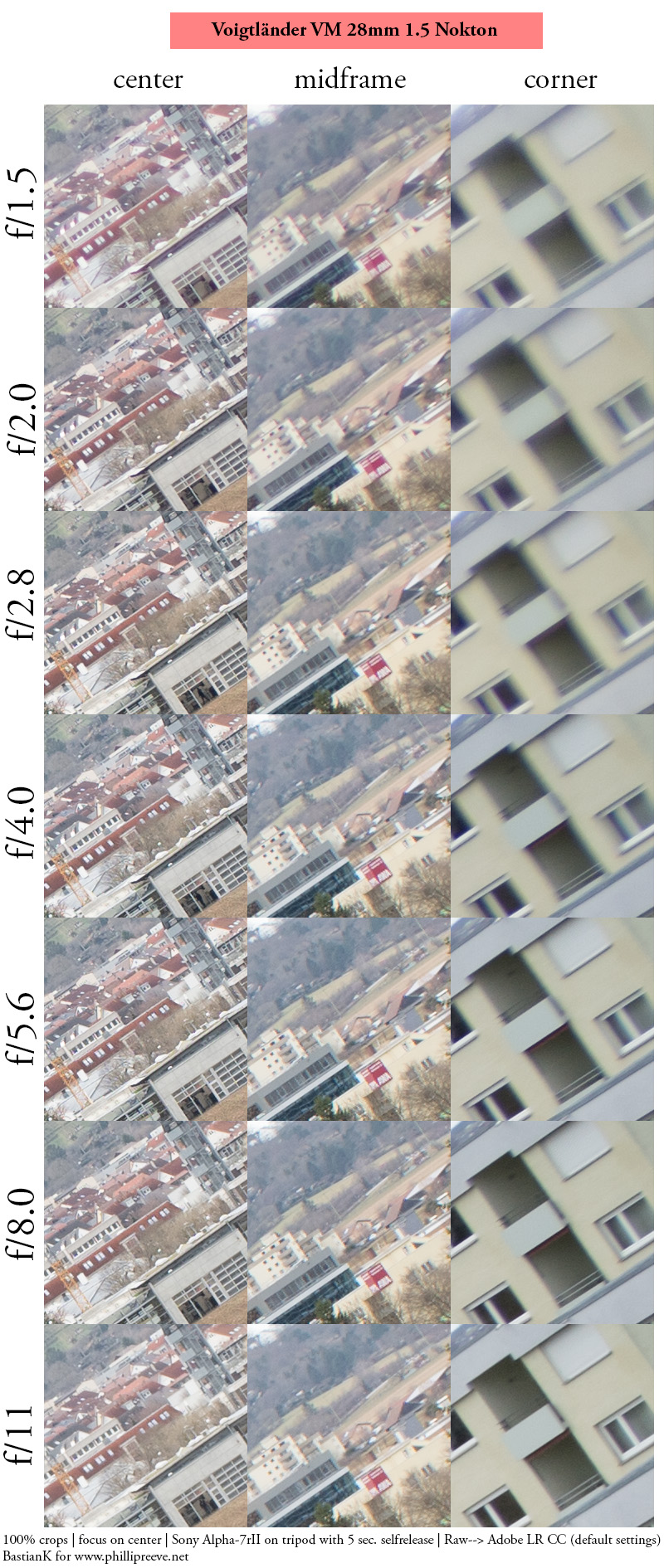
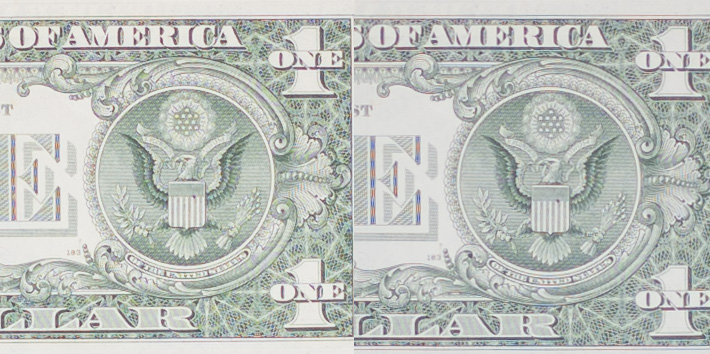

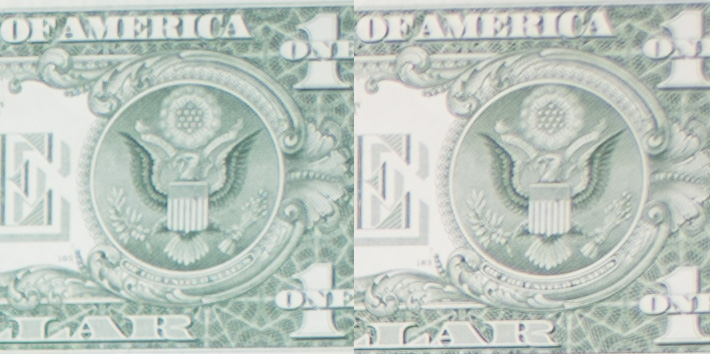


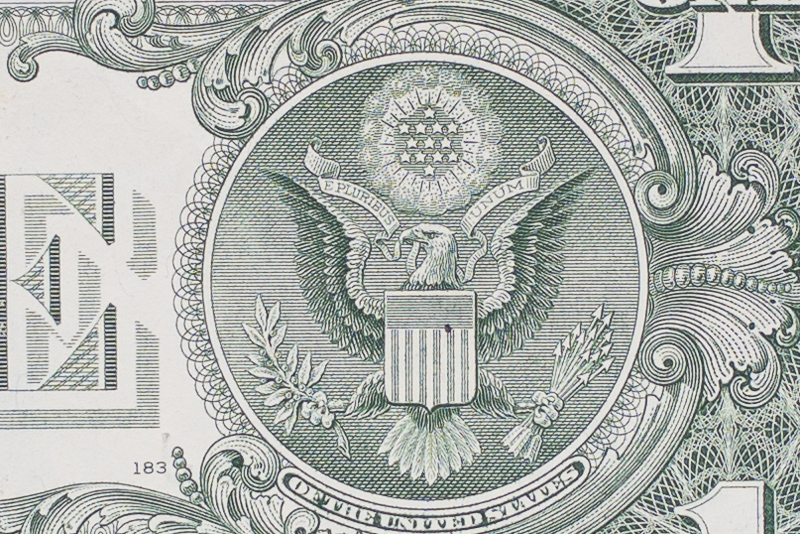
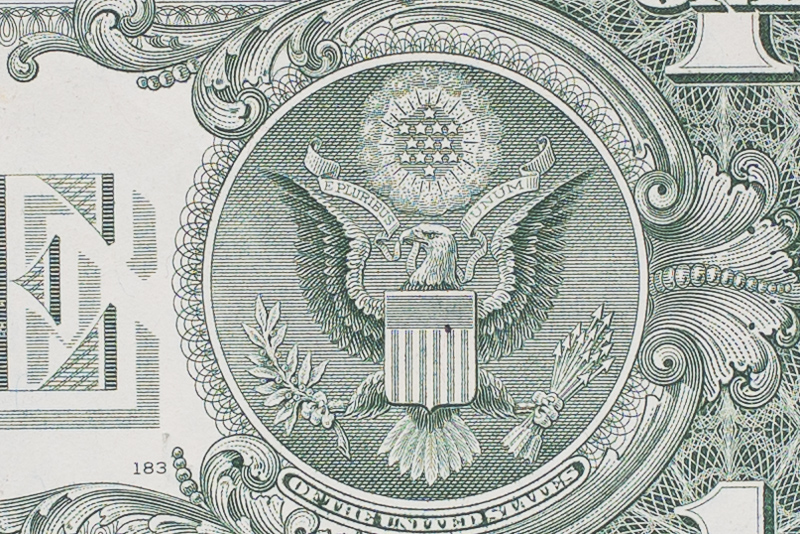
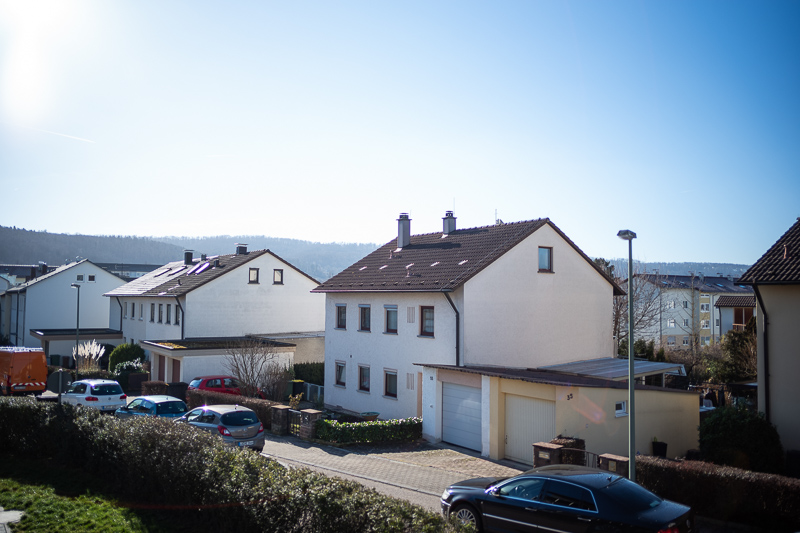
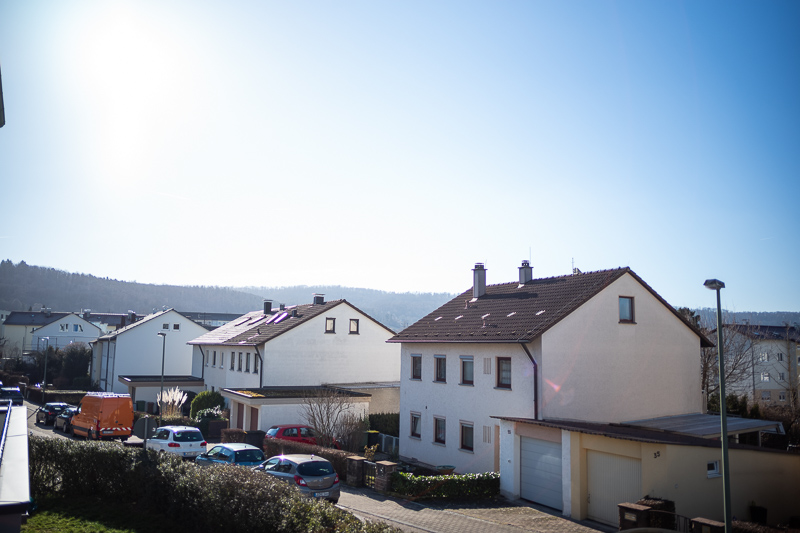
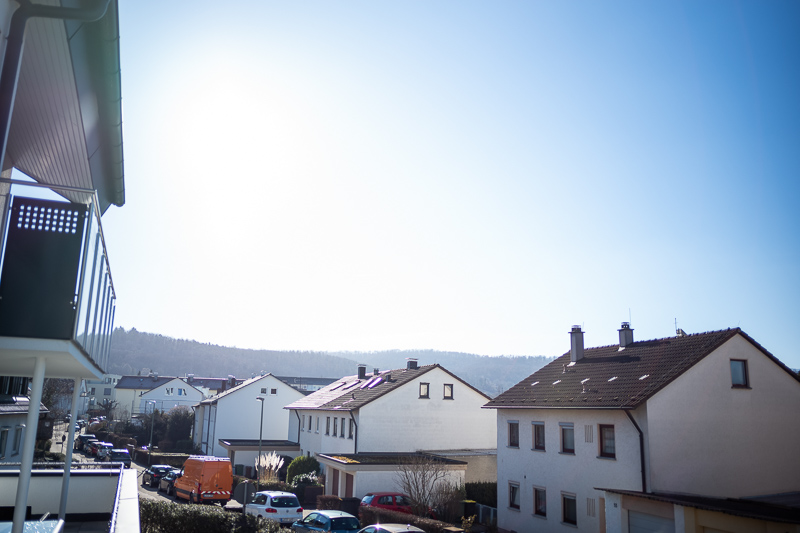
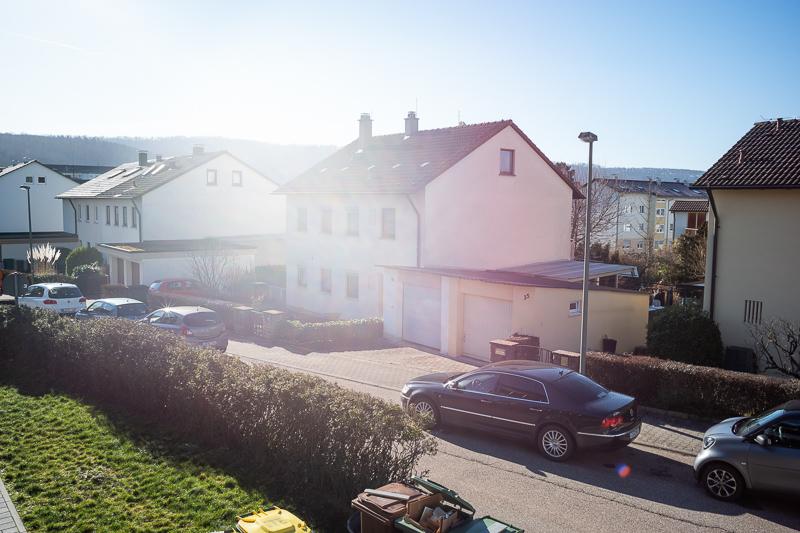
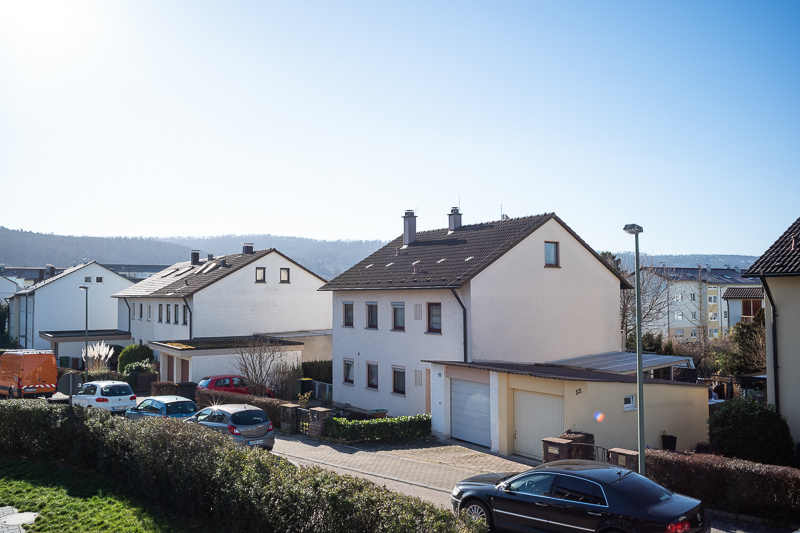

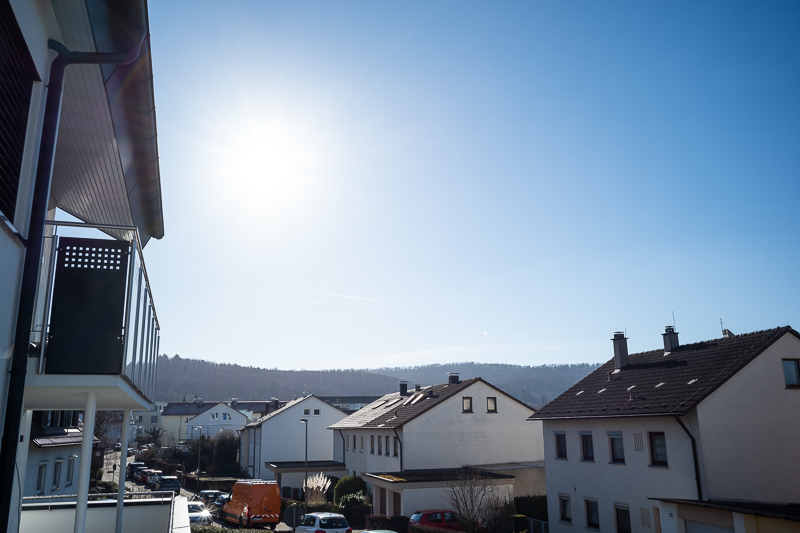

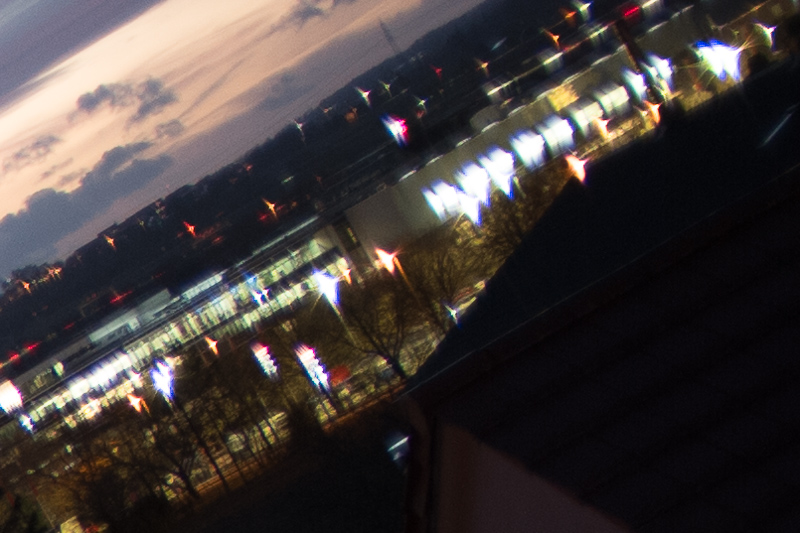
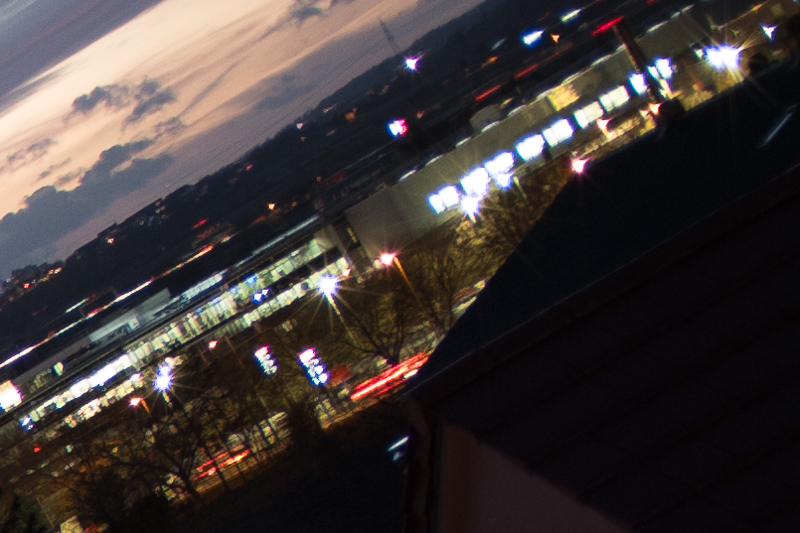

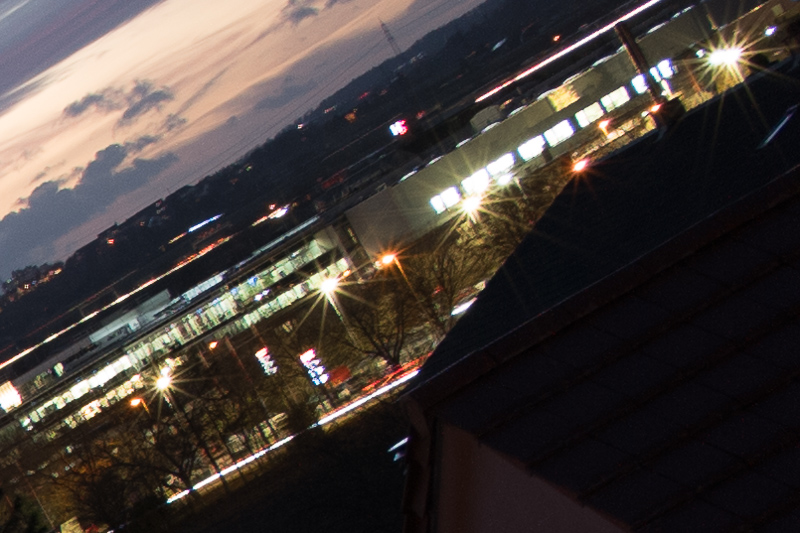
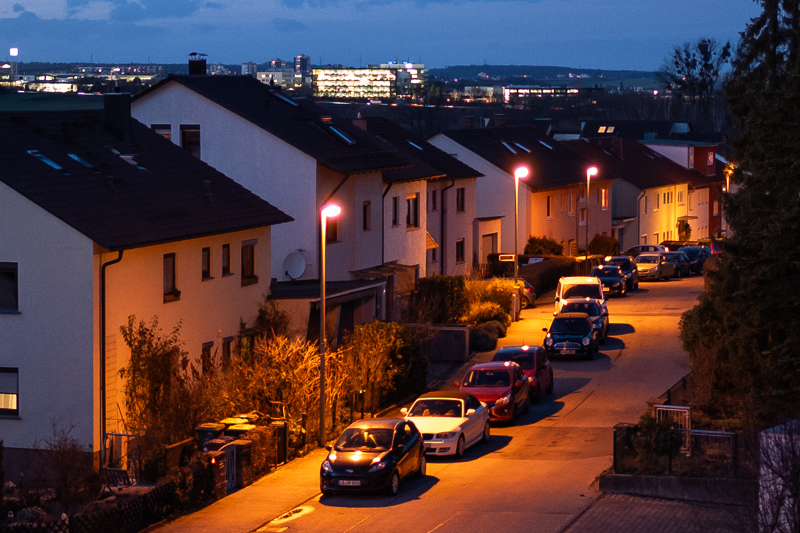
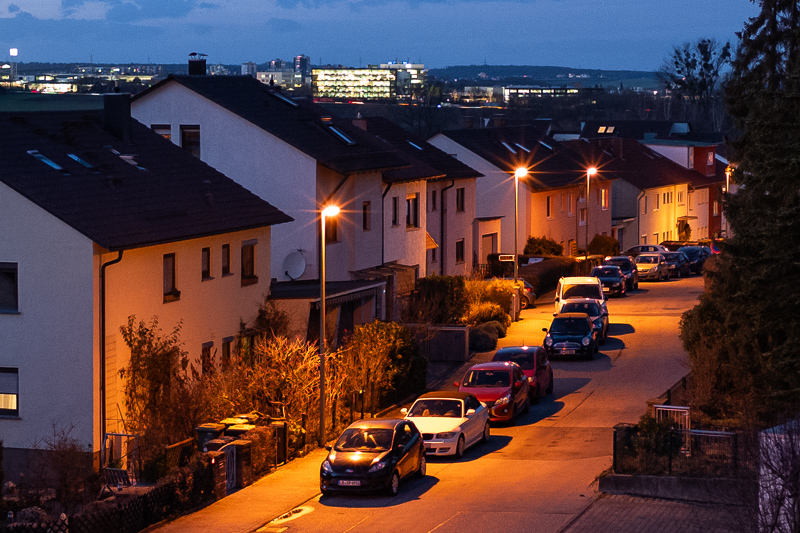
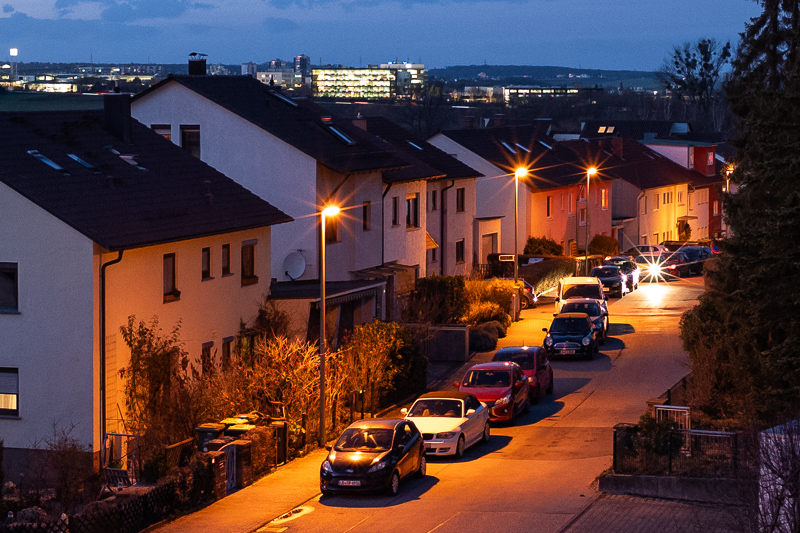
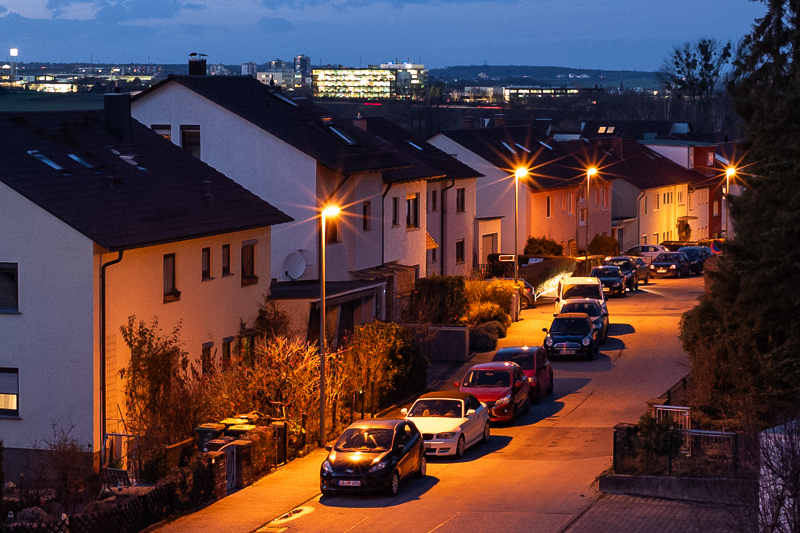

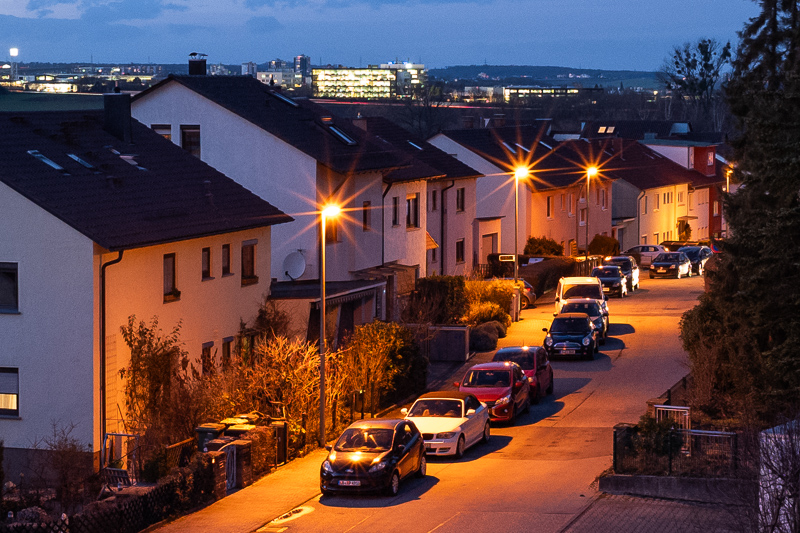

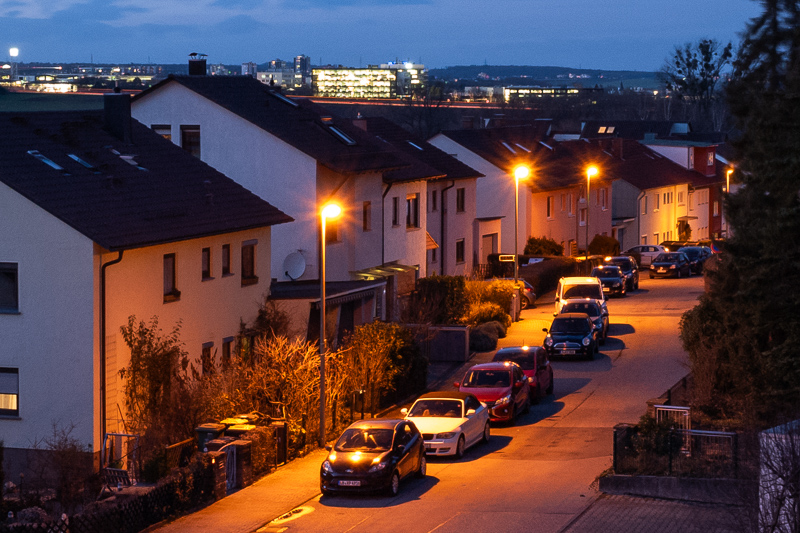
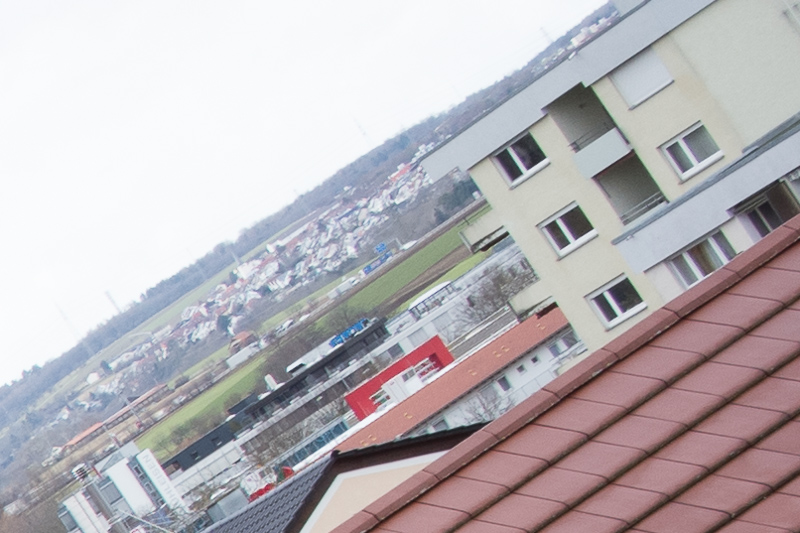

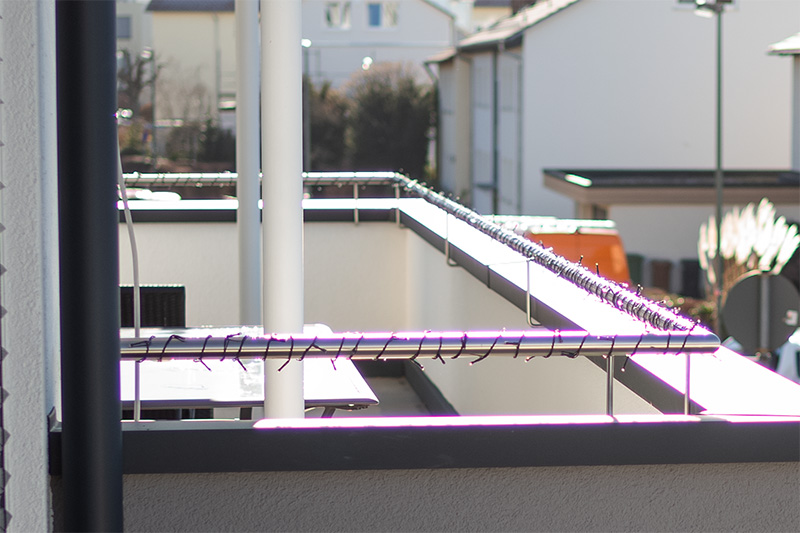
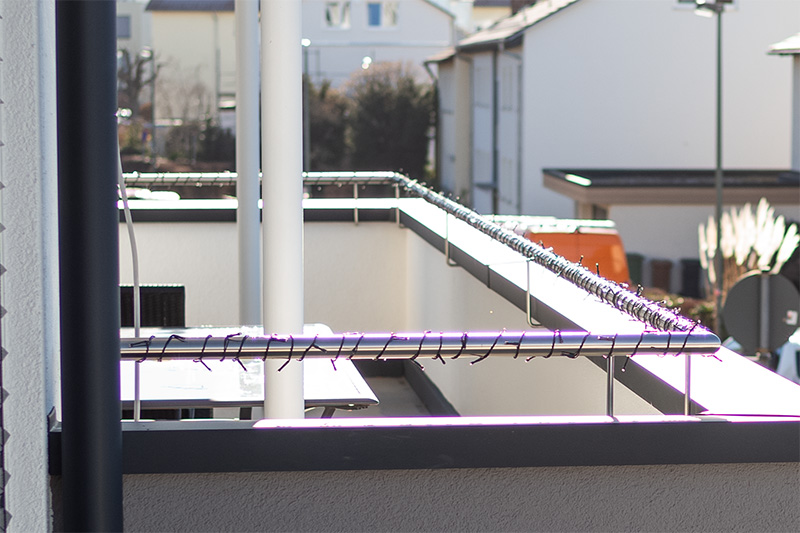
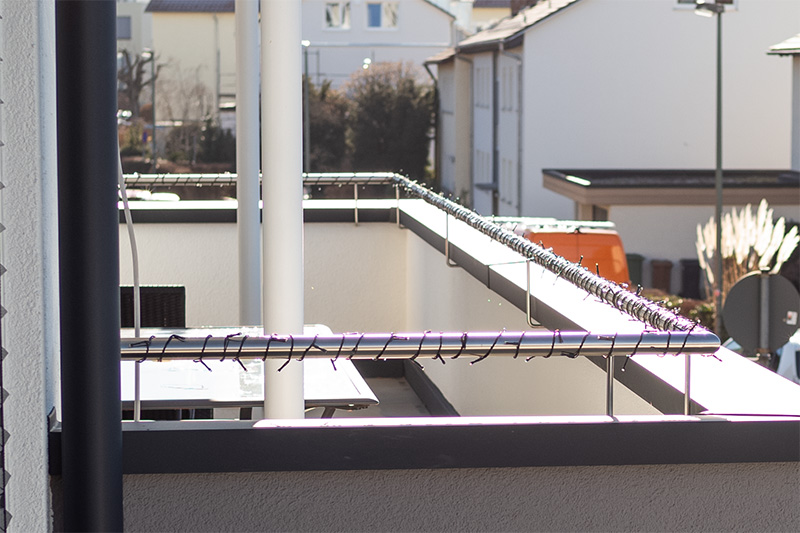
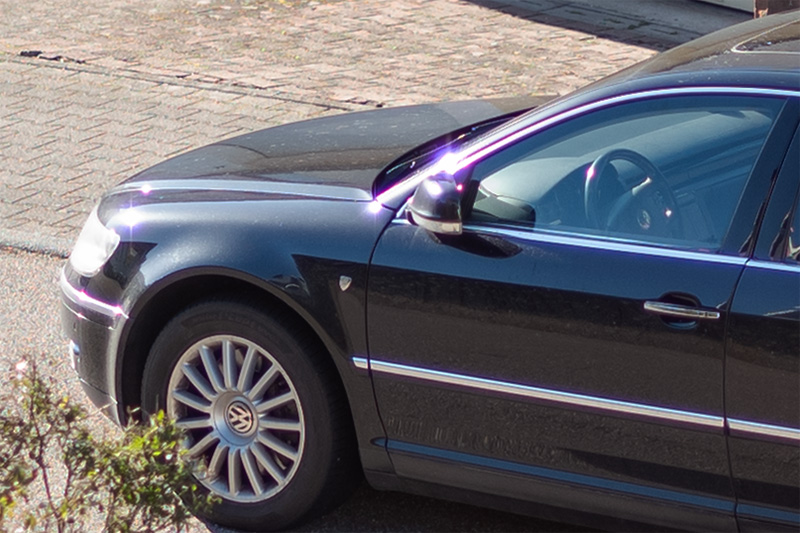
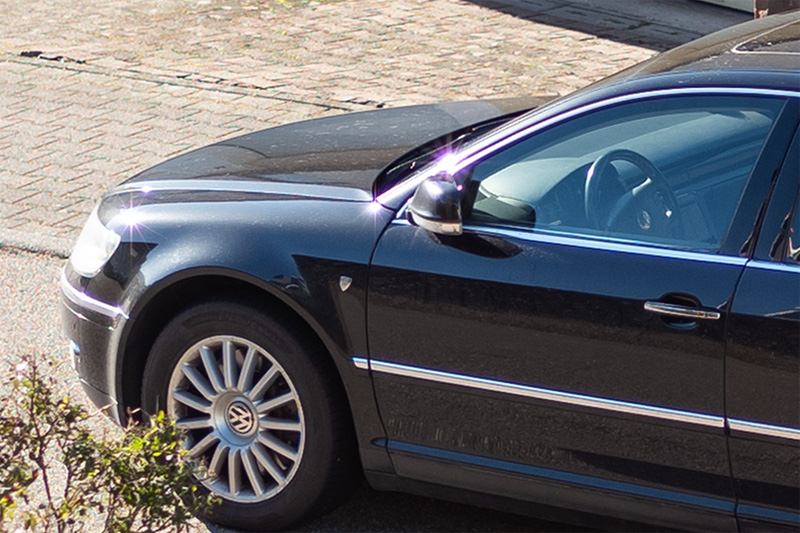
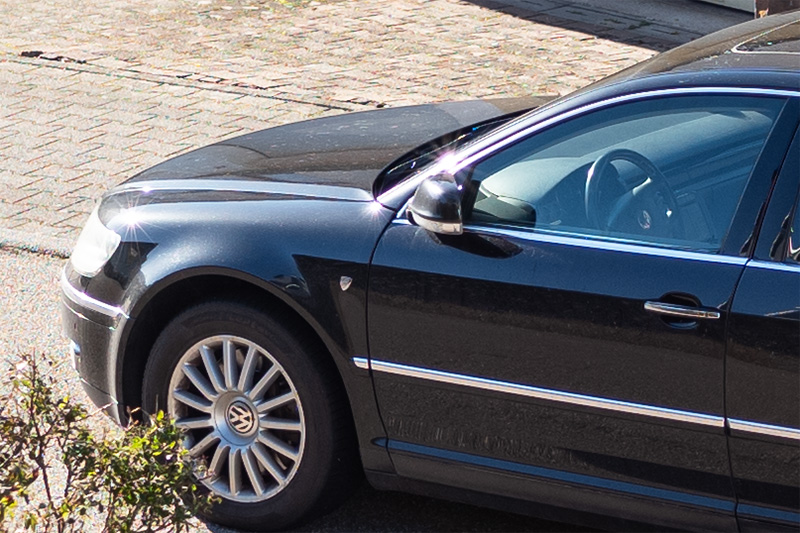
Excellent and thorough review as usual.
Did you try one of your diopters / close-focus “filters” (for instance, Elpro 4) to see how they may help off-center sharpness at portrait distance?
I have ordered a 43 to 55mm adapter ring and hope the Elpro 4 will yield sharper images in the outer mid-frame. I tried my Canon 250D diopter (in 52mm size) and it works great, but it’s only useful for close-up photography.
As with any of those filters you won’t be able to focus at infinity anymore I did not try that.
OK. I know that diopters limits the longest focus distance dramatically. However, I consider them useful for lenses without floating lens element.
I will drop a note here after checking how Elpro 4 works with this lens.
Bastian, you make every lens look good. Damn you. LOL
Excellent, thorough review as usual. Thank you.
You are welcome!
Center and mid-field sharpness are important to me so I went back and re-read that section several times, but I’m still puzzled. Typically I would be using this type of lens for close-in documentary shooting at distances of approx. 2-4 meters, but you evaluate it only at infinity and 0.9m… which of those two extremes would be a better match for my use case?
I admit this is slightly hair-splitting, but (like, I suspect, a lot of M-mount users) I’m in a quandary between this lens and the 28/1.4 Simera, which has an awkwardly-placed focusing ring and gimmicky DOF scale but leaves an extra US$300 in my pocket and seems to have similarly good overall performance but with a slightly different balance of strengths and weaknesses. Help!
PS – a ten-minute experiment with a strip of black gaffer tape would have answered the question of whether the bright front rim is responsible for the ring-shaped flares, wouldn’t it?
I don’t know of any other reviewer who checks a lens’ performance at three distances. Seems that is still not enough.
The Simera is probably the better lens for you.
There will also be a comparison of 6 fast 28mm published soon.
I didn’t ask you to check performance at three distances, I just asked which of the two distances you do test would be more representative of my usage. Thanks for your answer! I appreciate the thoroughness of your reviews.
0.9 m it is 🙂
Regarding the ring flare, I have seen that occurring even when a (Zeiss UV) filter with black ring covers the silver front of the lens. So, at least some of that flare comes from the glass or internals of the lens. As Bastian also makes clear in the review, the ring flare disappears when stopping down to f/2 8.
There’s a black nose mod for the Voigtlander 28 1.5 lens on eBay which might help with the flare, to a point maybe.
Good to know it’s basically gone by 2.8
Thanks for the review! Cool lens, but too bad it’s M Mount only. I wonder if Voigtlander is doing the Zeiss thing and not making any more e-Mount lenses. When was the last time they made anything for e-Mount? Last news from them was that they discontinued the SE series. Now we only are getting m-Mount lenses that do not adapt well. It would be nice to at least have m Mount options that perform well on e-Mount.
I wonder too.
But I also wonder if releasing lenses designed for the constraints of the M-mount with only minor adjustments would actually be sufficient to lure in enough customers, when there are so many alternatives these days.
Yeah… it would suck to lose arguably the greatest lens manufacturer for e Mount. Nothing else renders quite as well as CV. I guess I just have to wait for them to make m-Mount lenses and see which ones accidentally perform well on e Mount. I think the 75/1.9 was good news and it’s great that it performs well with the LA-EA9.
Nokton 50mm f1.0 for e-mount is sheduled to be released in March.
Thank goodness! Where did you get this info?
https://www.cosina.co.jp/voigtlander/en/e-mount/
Look for 50mm lens – middle of the page
Oh boy, that is exciting! not like we have enough 50mm options lol though. A fast e mount 28mm or something fast in the 58 – 75mm range are some huge needs right now for e-mount.
though, it seems that they discontinued all of their SE models and also their 21mm f3.5. I wonder if they are going to release more competitive analogs soon and they’ve just been focusing on making RF and Z mount lenses until recently, now that is an available market for them. I hope they do what they’ve done with their F mount where they replaced the excellent 58/1.4 and 28/2.8 respectively with an even better 58/1.2 and 28/2.8 aspherical.
10 months later, surprise surprise, E mount version announced. Definitely didn’t see that coming…
A weak point of the lens is the strong „ purple fringing“ at open aperture. Too bad Voigtländer!
The Ultron is the better choice for landscape photographers.
Having both lenses at the moment, I fully agree regarding the Ultron II being technically better for landscape. The only real drawback of that lens is strong optical vignetting, which of course is of no consequence stopped down.
Thypoch for me, love the smoothness of bokeh and general sharpness/contrast. Thanks Bastian for reviewing these lenses. I might pair that with a small 28/2.8 when I want a smaller kit.
I might do that, too 🙂
For those who consider the Nokton 28mm, but are hesitant because of the drop in sharpness well away from center at portrait distance, I can say that the Leitz Elpro 4 (two element) close-up lens works very well with this lens. The Elpro 4 has a diopter value of +0.75, which means that infinity focus on the lens will be reduced to 1.33 meter. You will need a 43-55mm step-up ring for it.
I really wish we had more high quality but weak diopters.
I also have an Elpro 4 here which I use to improve the minimum focus distance of the Voigtländer VM 75mm 1.5, but 1.33 m maximum focus distance would be too limiting for me.
I think you also have the Tokina AT-X +0.4 diopter in 72mm size? It has better resolution with the Nokton 75mm f/1.5 lens than used with the Elpro 4, but not as well as with my other lenses, and it is a bit large for a lens with 58mm filter thread. The Tokina is also great with the Nokton 50mm f/1.
BTW: I have a Canon 250D in 58mm size on the way. It just struck me that it might work with the 75mm for near-macro work, but I have low expectations.
Thank you for the nice review. I love the rendering of this lens. Sadly there is no version optimized for E-Mount.
Could you use a PCX Filter to get better corner sharpness and less field curvature for E-Mount (like Voigtländer 35 1.7)?
Greetings
Mathias
You might get slightly better corner performance with a fitting PCX filter (I wouldn’t know which one though).
The lens generally has a lot of field curvature though. I would not buy it for use on E-mount.
There is plenty of optical vignetting in the corners with this lens shot wide open, which may give the _impression_ that there is outward bending field curvature.
However, my thorough and repeated tests with my Kolari Ultra-Thin converted Nikon Z6 shows without a doubt that there is no outward bending plane of focus. For instance, focus at infinity in the center is reached shortly before the hard stop on the lens, while best focus in the sides and corners is achieved when putting the focus to the hard stop = slightly _inward_ bending plane of focus.
For reference, see the comment I made to Bastians fast 28mm lens comparison here:
https://phillipreeve.net/blog/comparison-fast-28mm-f-1-2-f-1-4-f-1-5-fullframe-lenses/#comment-301210
FE version of this just announced 😏
Hi Bastian, just found out that finally there is a Sony E Mount version of this 28mm 1.5 from voigtlander. Are you planning to test it or maybe you can already comment on itv
Currently I can only say “maybe”.
I must say, I am a bit disappointed by the latest “ports” of Cosina’s lenses.
When designing a lens for M-mount there are a lot of design restrictions (position of the rear element, mount diameter)
and if the lenses would have been designed from ground up for at least E-mount they could be a whole lot better
without being noticeably bigger or more expensive.
So what I expect of the 28mm 1.5 for E-mount: a bit better corner sharpenss at wider apertures compared to using the
M-mount version on a Sony camera but otherwise the same, including the huge vignetting, which could have been cured with at least a partial redesign for E/Z/RF-mount.
What do you make of the Z mount 28/1.5 Nokton putting on some weight vs the E mount version (+40g) and having marginally larger filter threads (52mm vs 49mm)? The weight seemed like more than I would expect from just the mount size difference but maybe I’ve been counting grams too much, after all E mount versions of M mount ones have put on even more weight over casing changes.
They simply adjust the casing to fit better to the bigger E mount diameter and the lenses also need to be longer because of the flange focal distance. 40g more are no sign for improved Optics.
Thank you so much for the quick reply. So many years I follow you and the whole team. You are great!
Nothing is easy… I into urban/street photos… enjoying taking pictures from quite close relatively closed aperture 5.6 or above (challenging though) I was torn between the Voigt M 28mm 2.8 (sure 2.8 will be enough) + adapter or the 2.0 and the older Zeiss 25mm 2.4 E Mount (found a second hand one which I will test soon). Now this 1.5 E Mount and the wide aperture can be a +. I know the choice is quite personal… would you give a recommendation or consideration for making the choice (shooting on A7iii till it will die ok my hands…) Thank you so much Again. best, Salva
For your use case, I would actually recommend a used Zeiss 25mm 2.4 which can now be found for attractive prices.
But neither one of them is a bad lens and I don’t think the actual differences are huge.